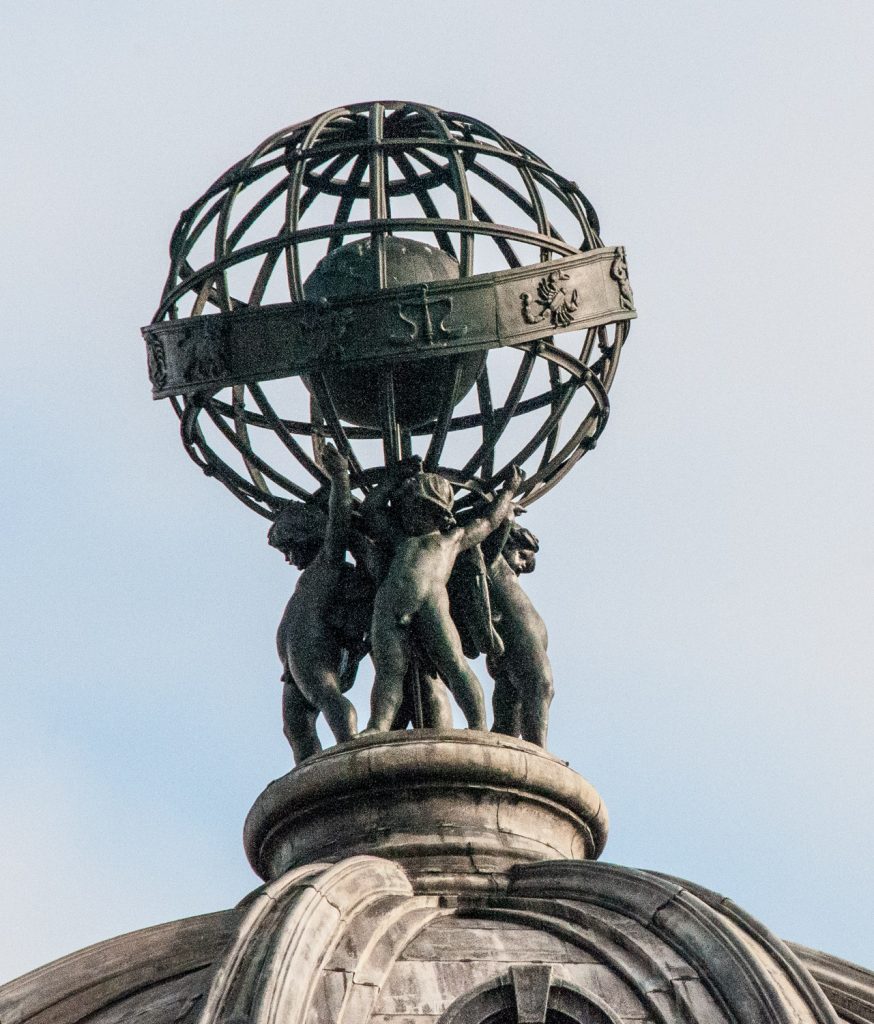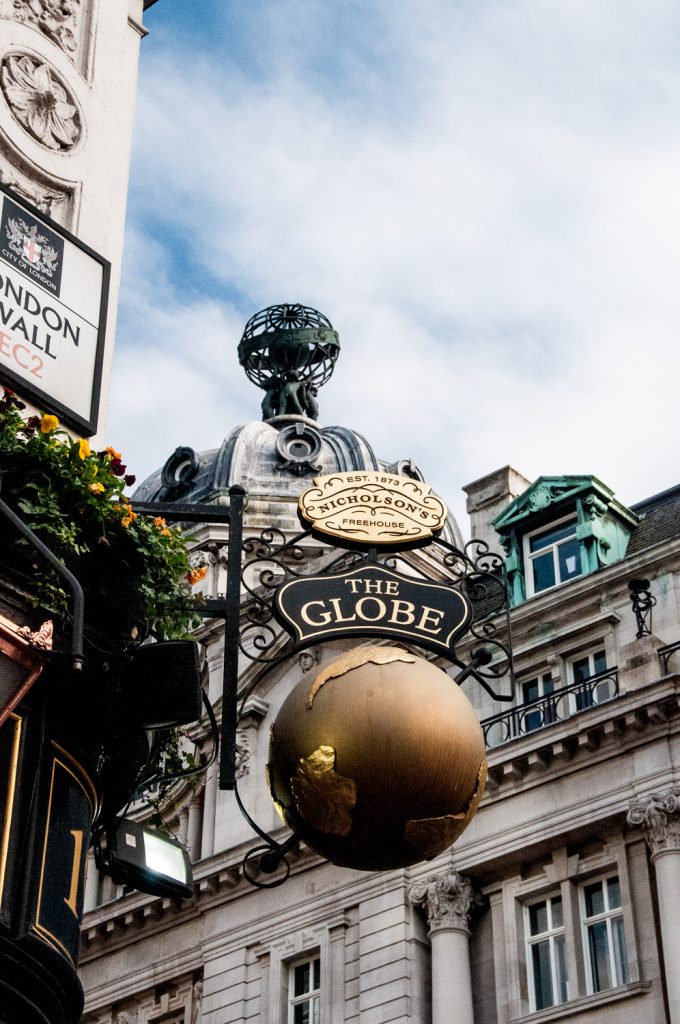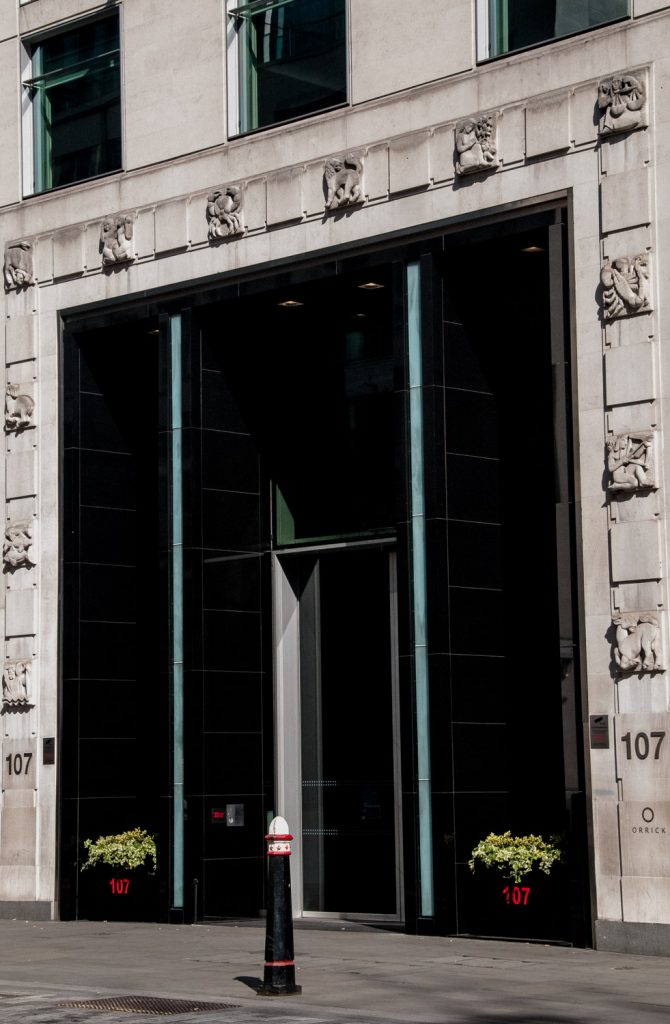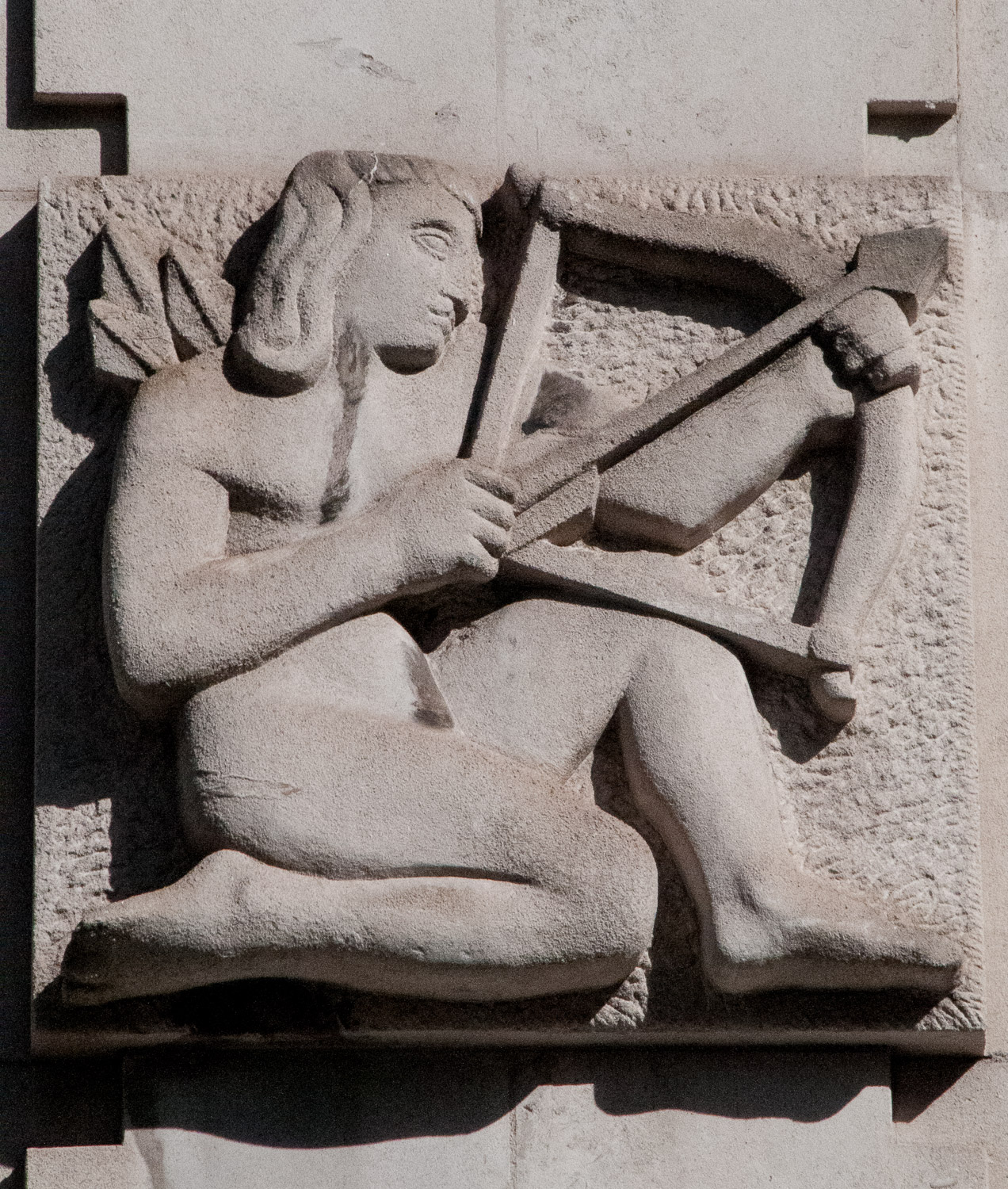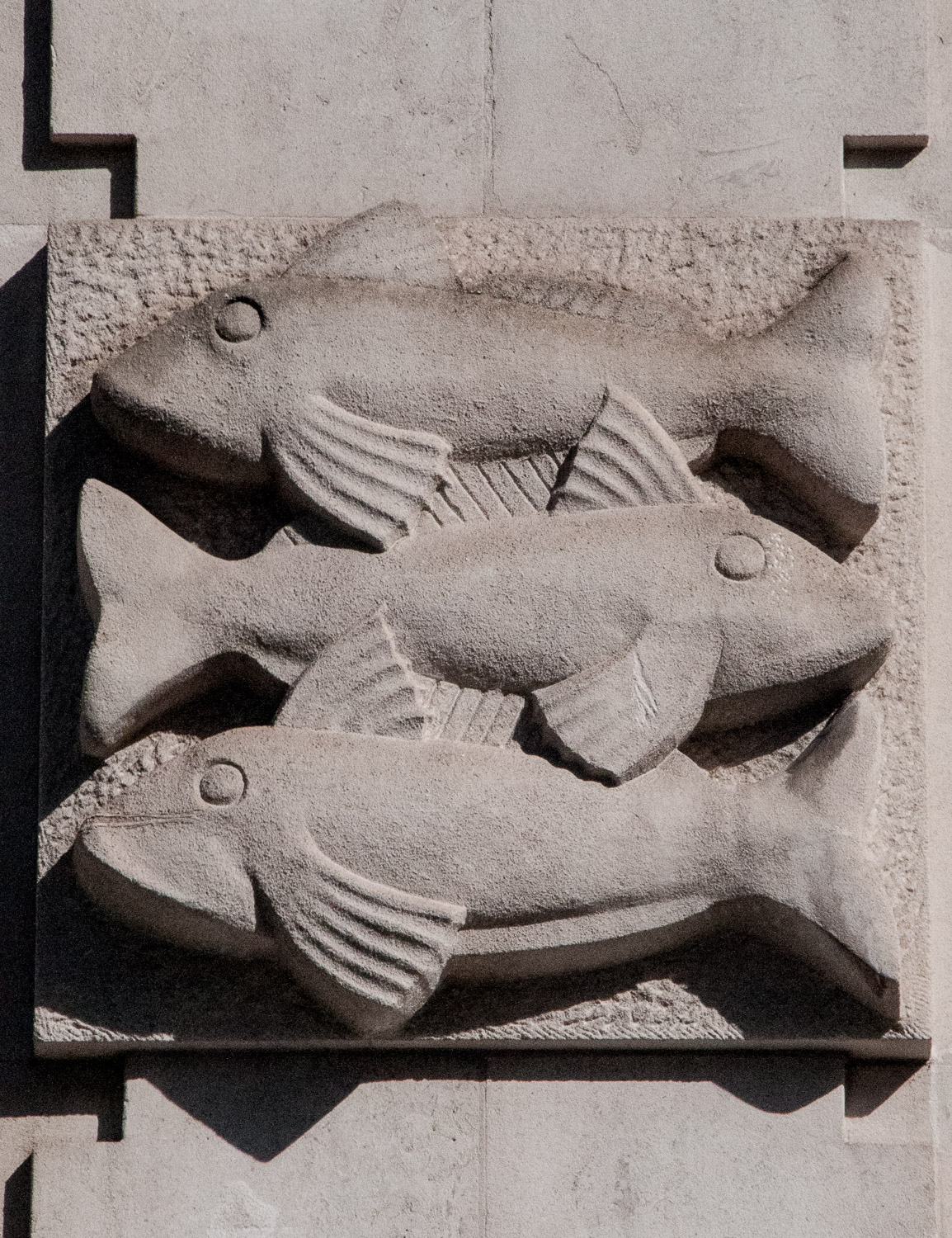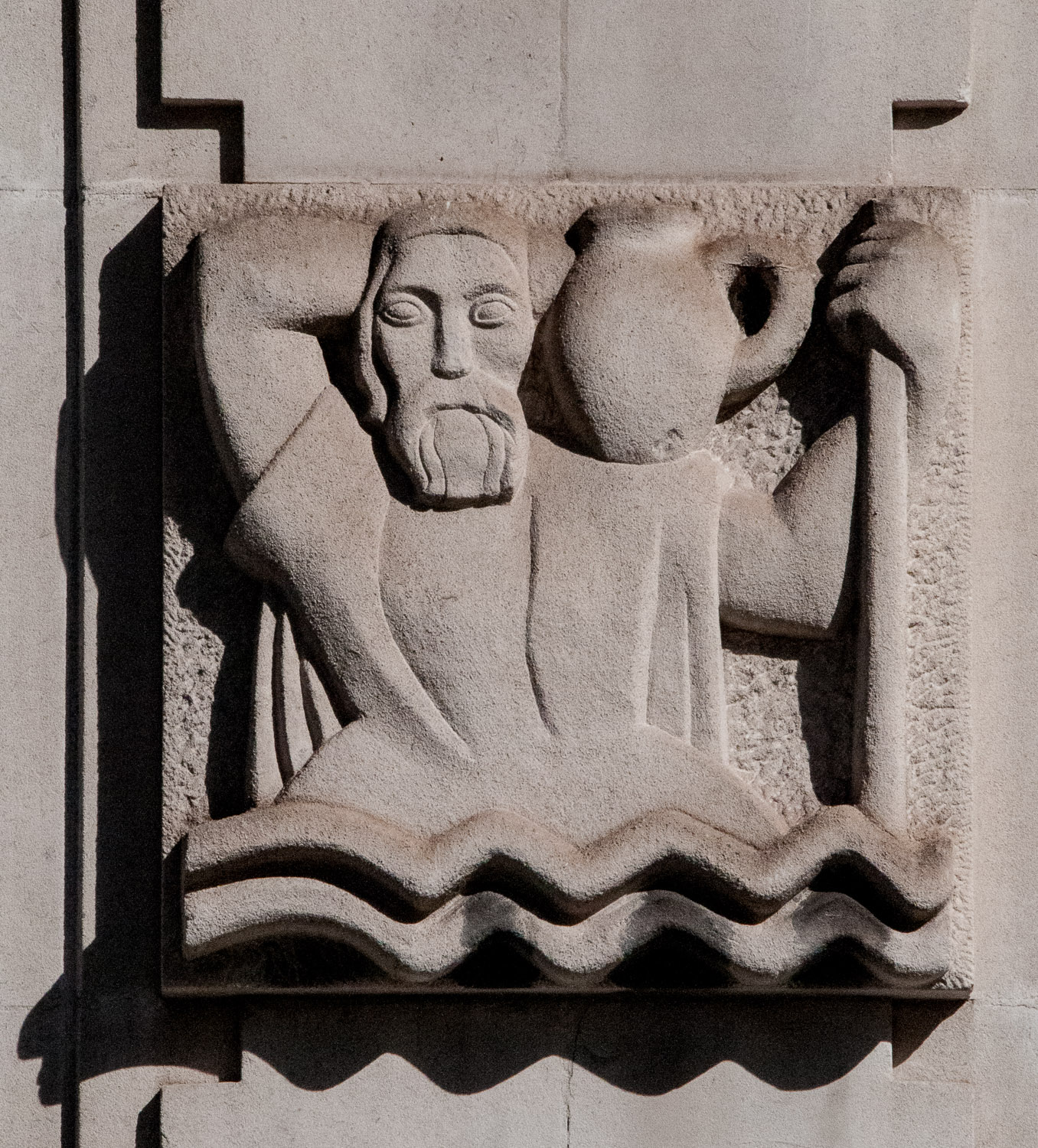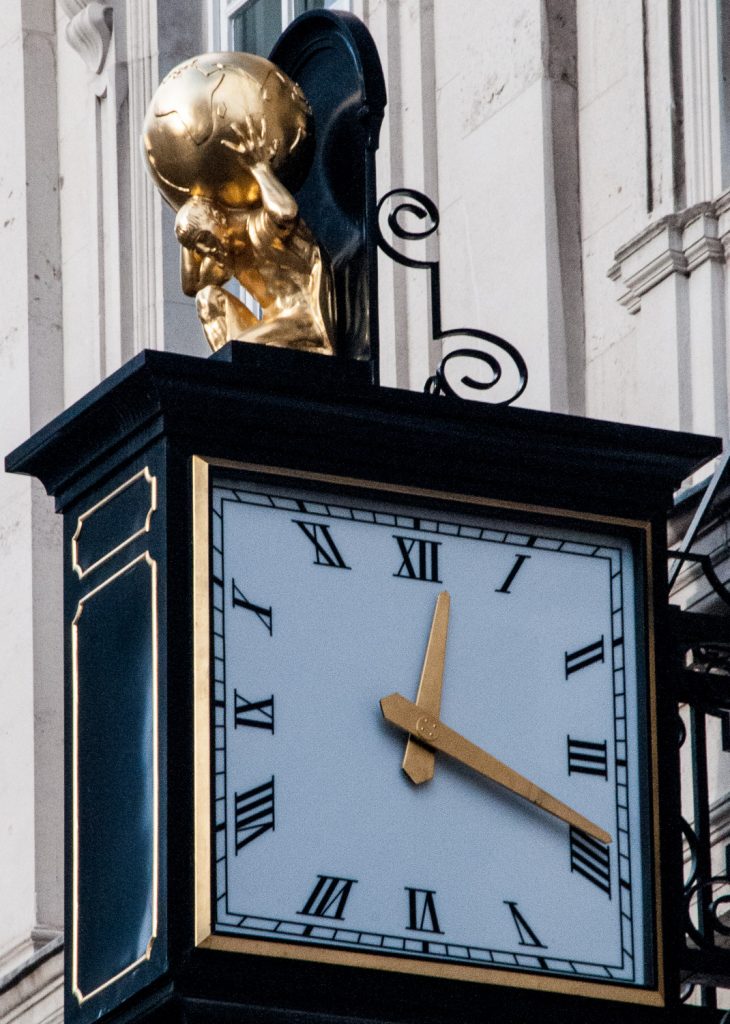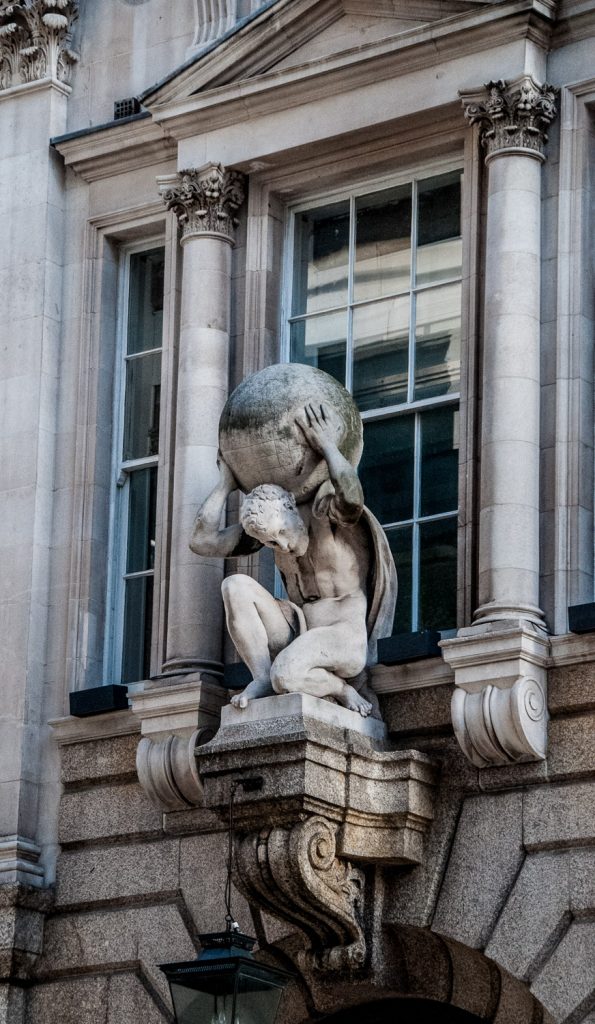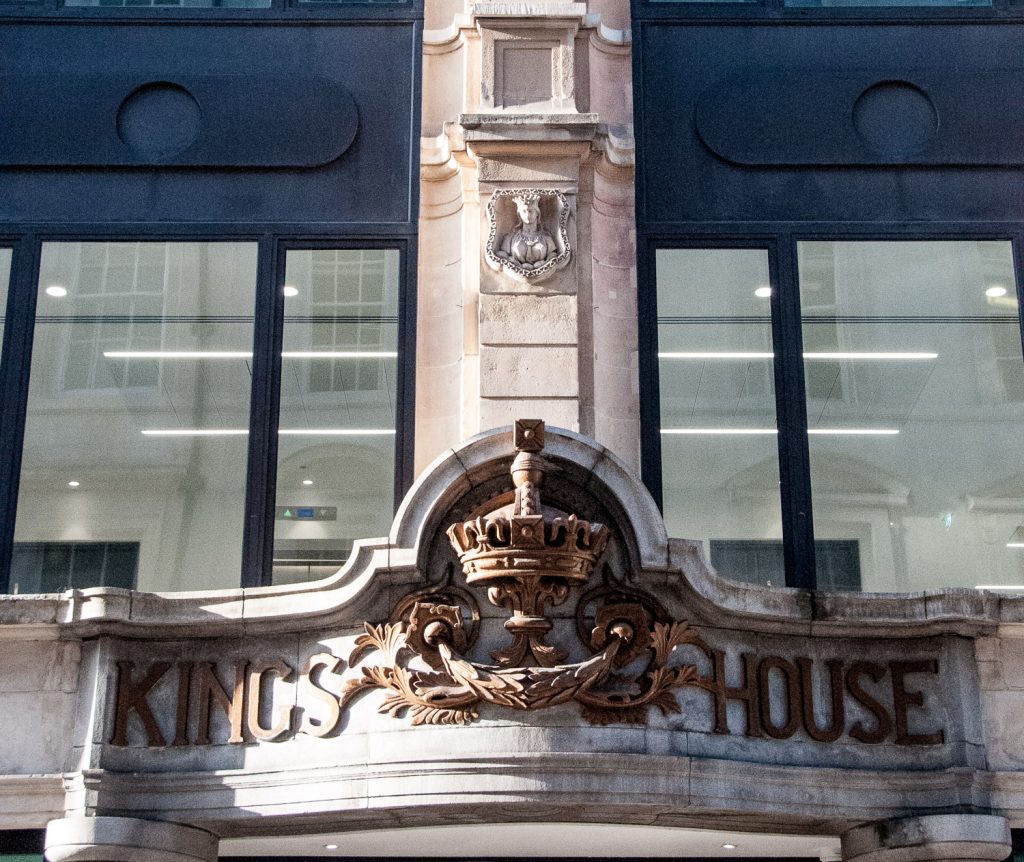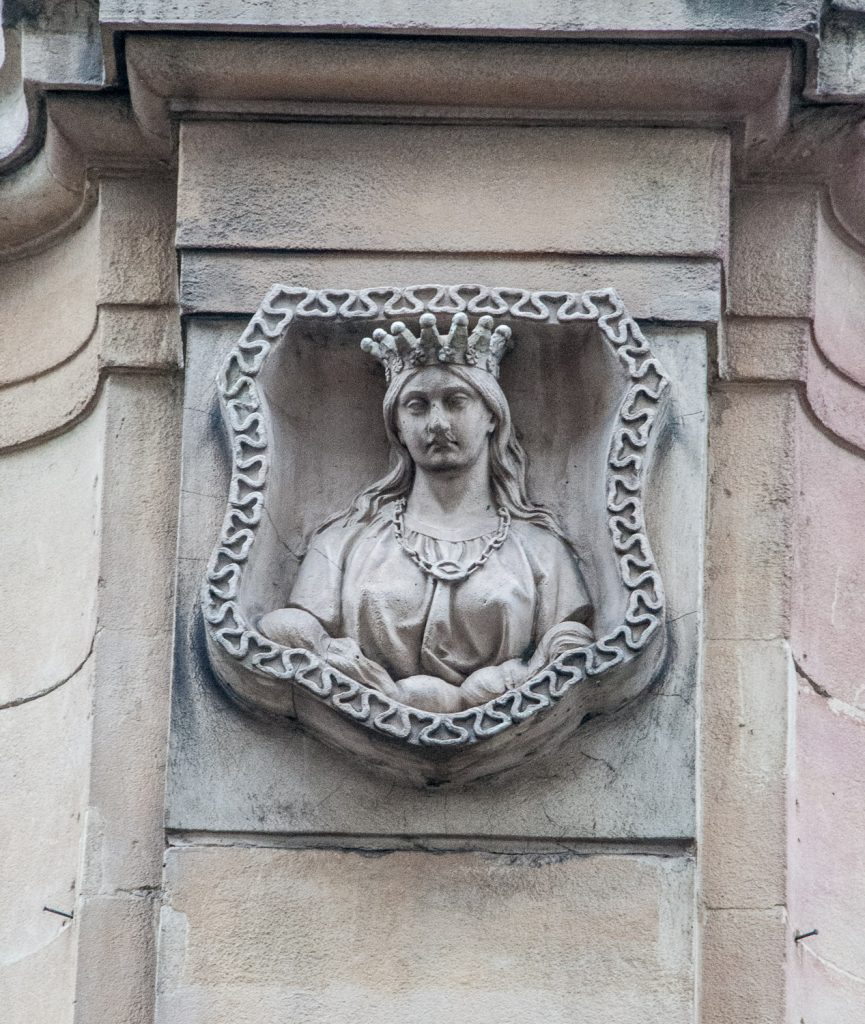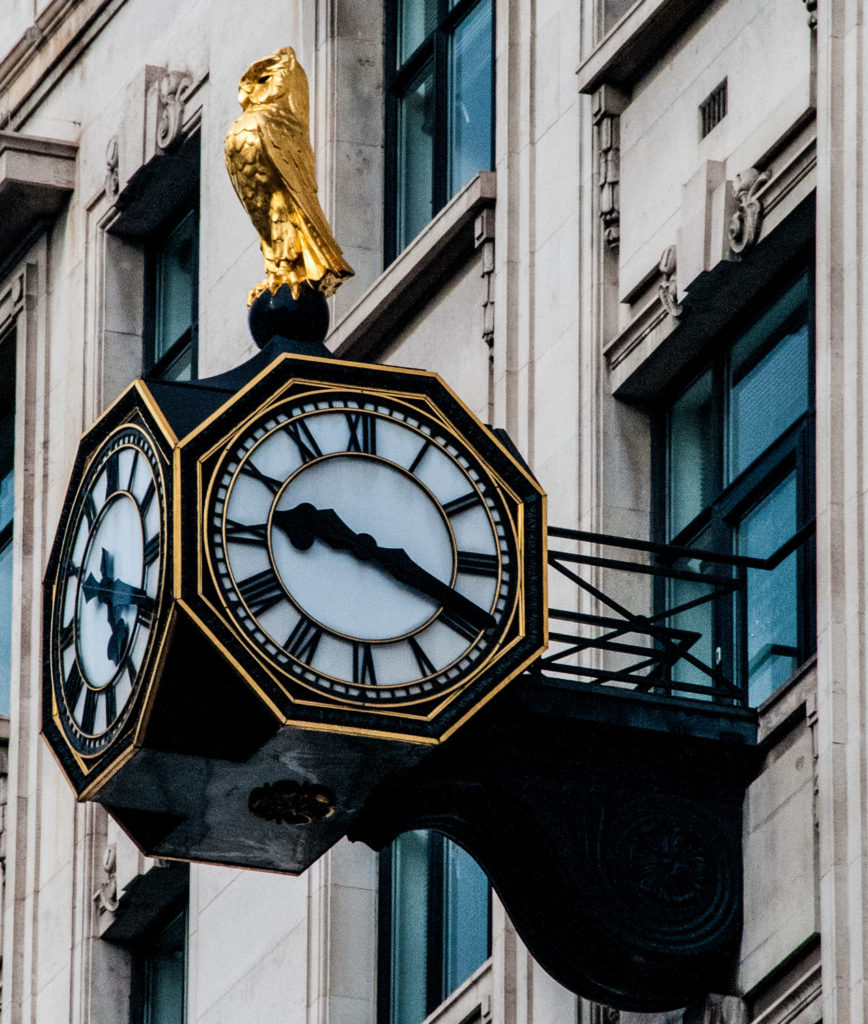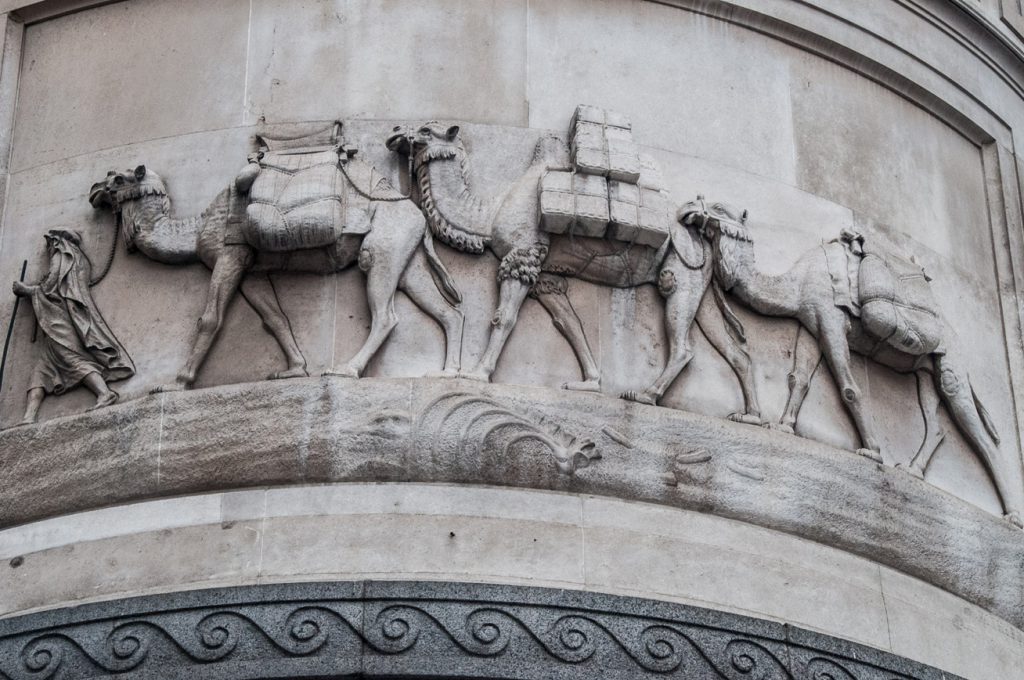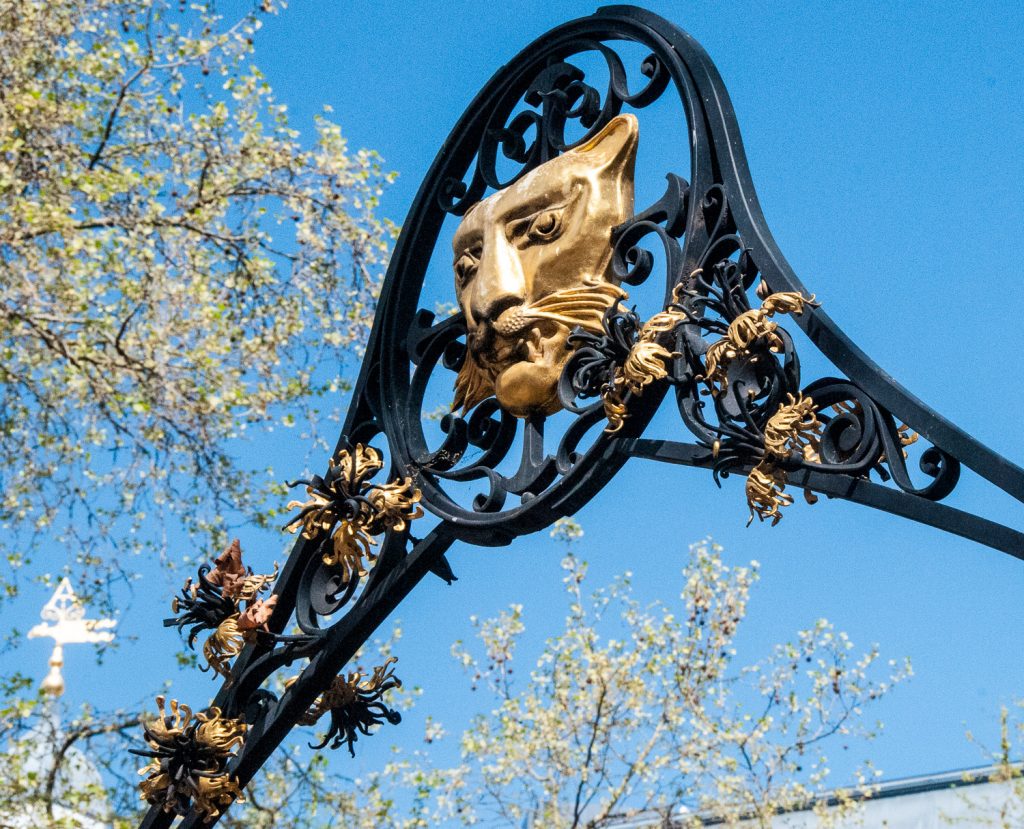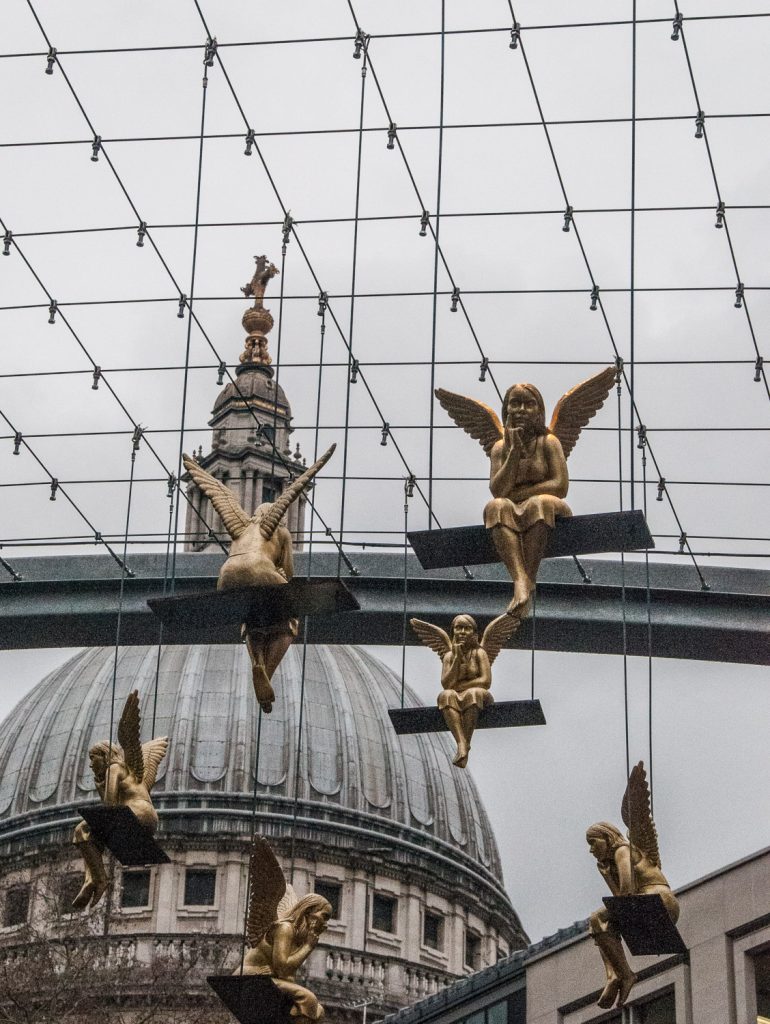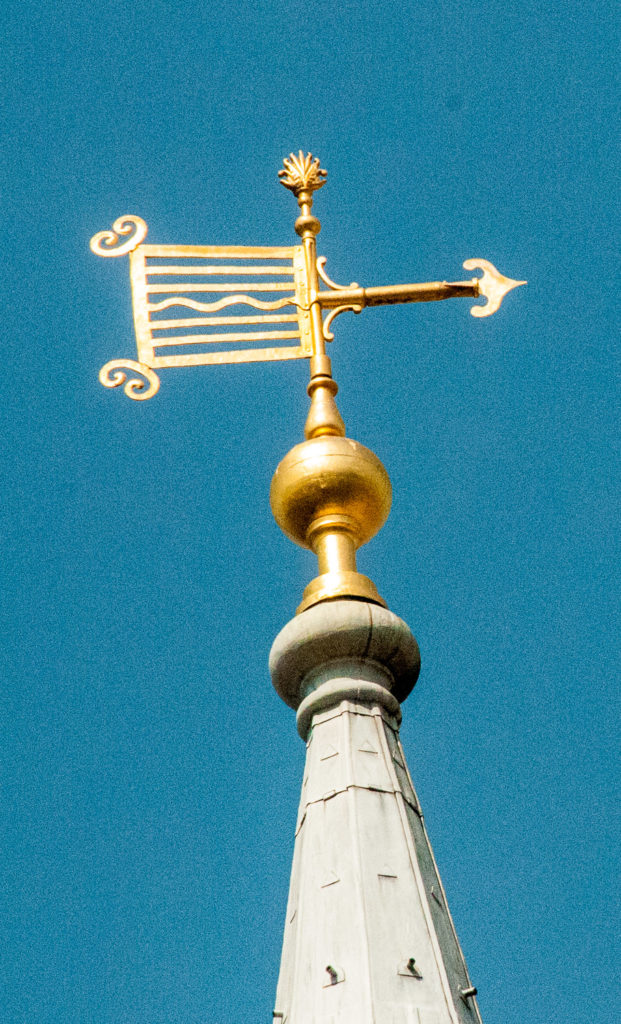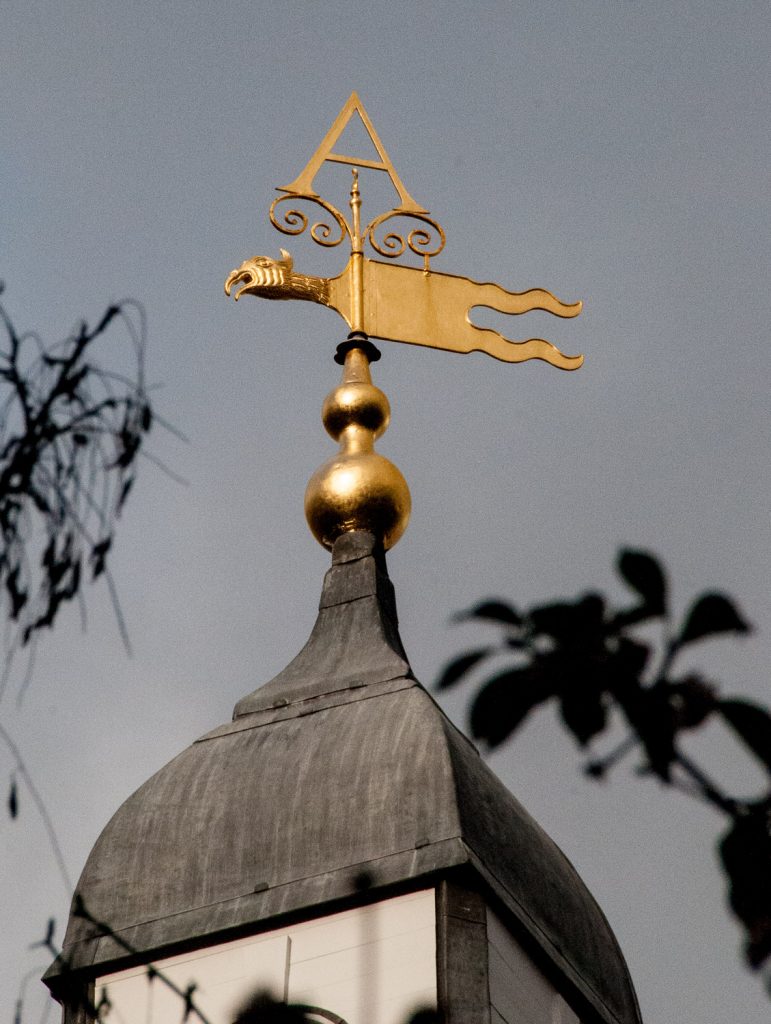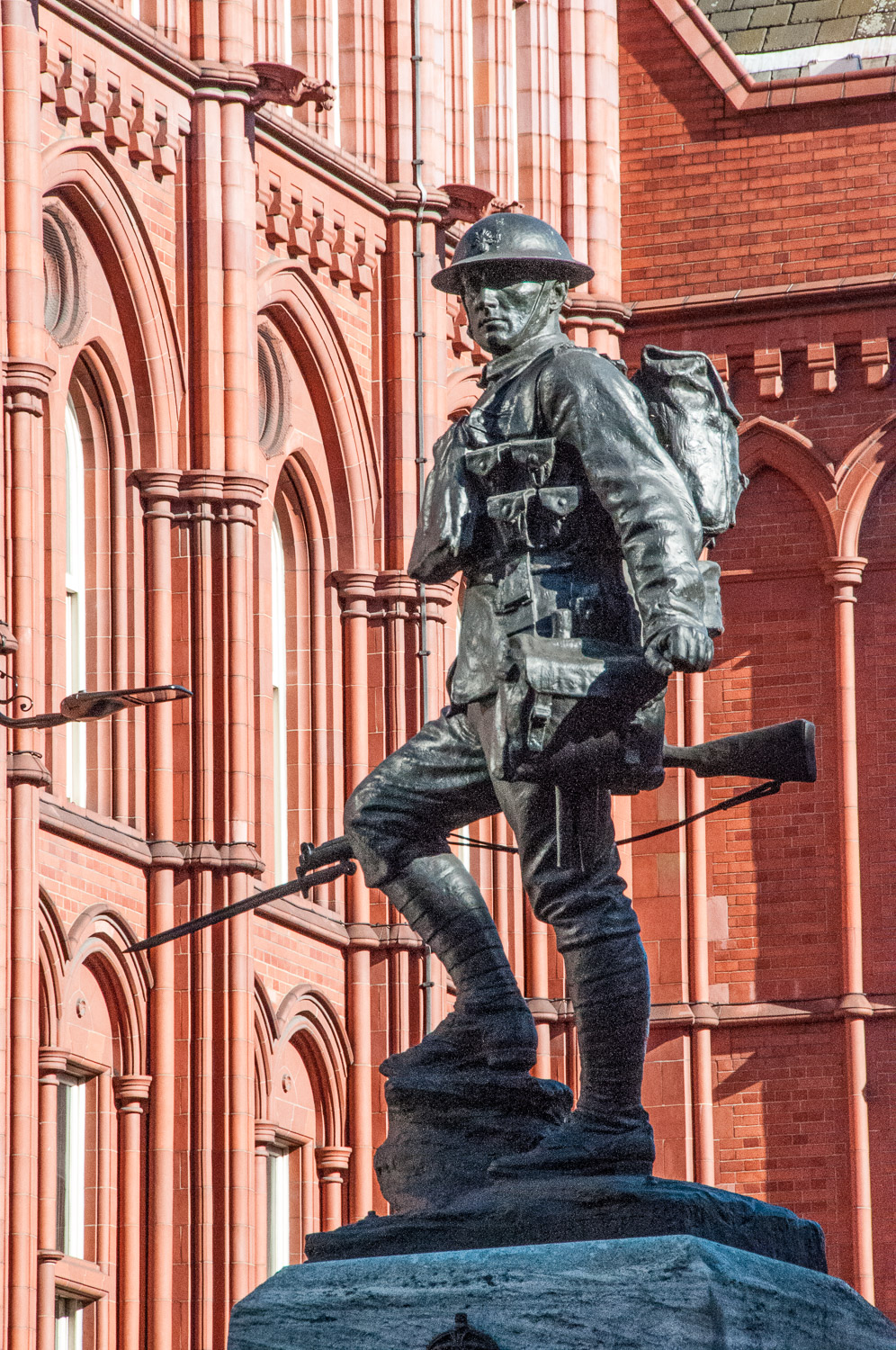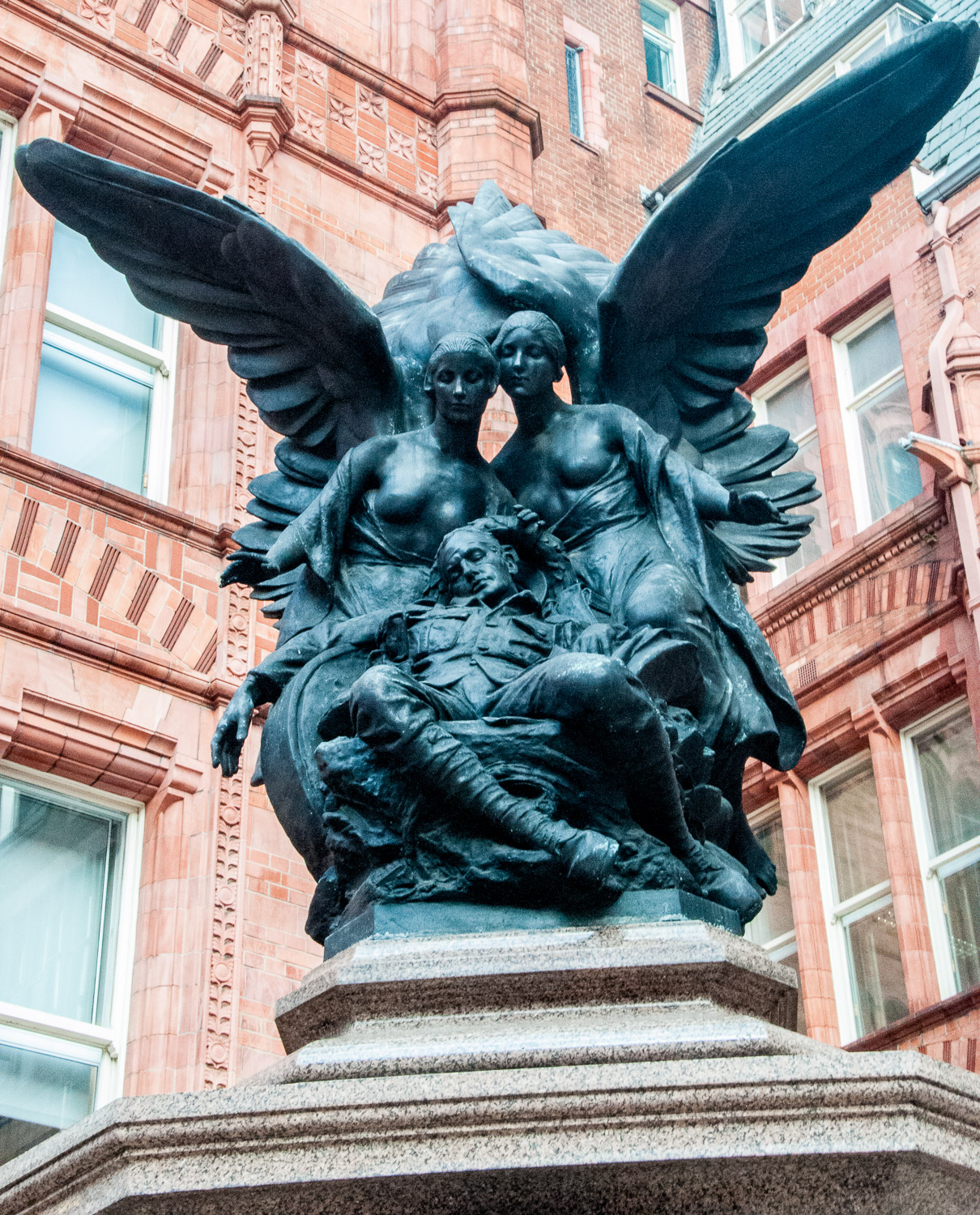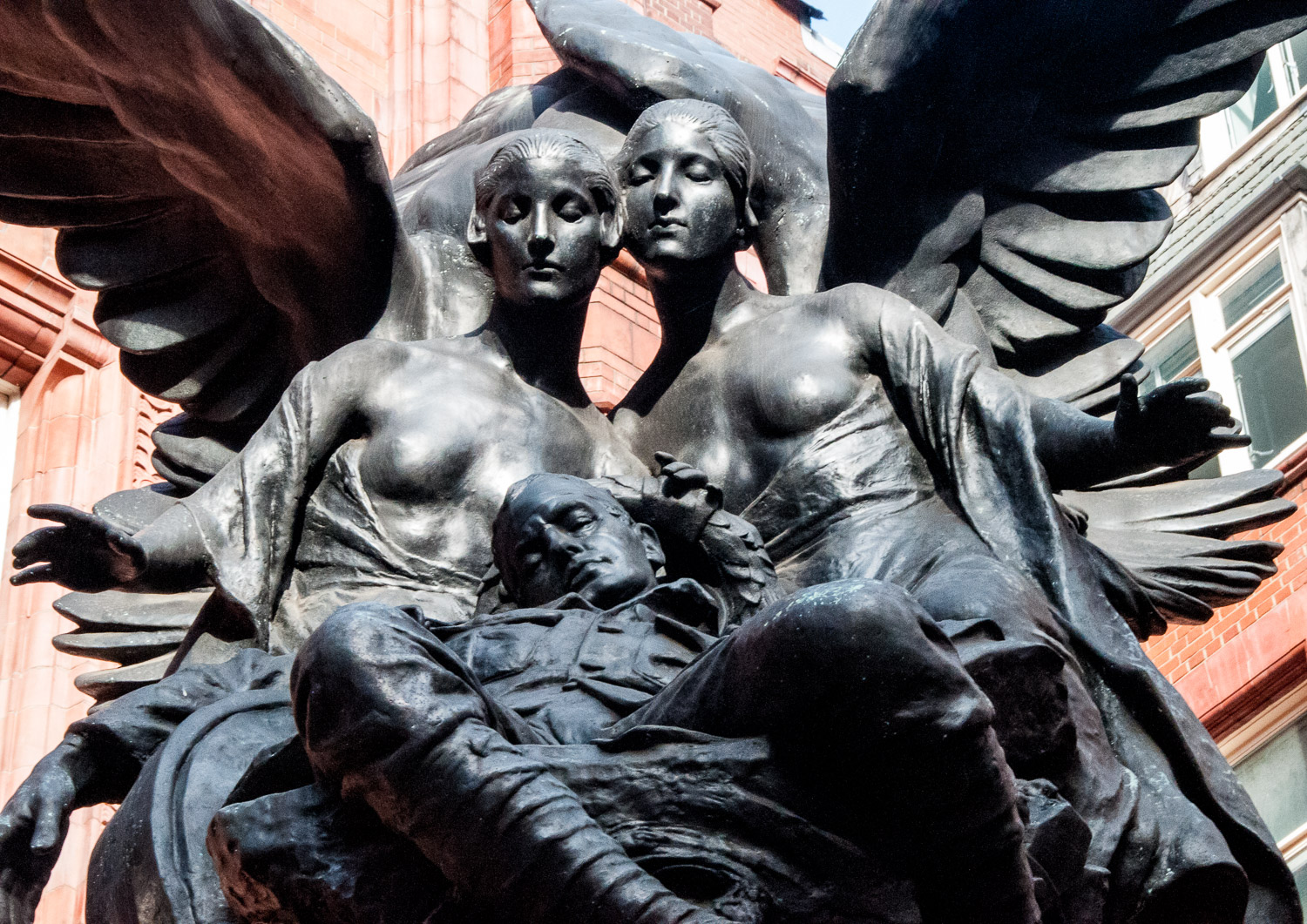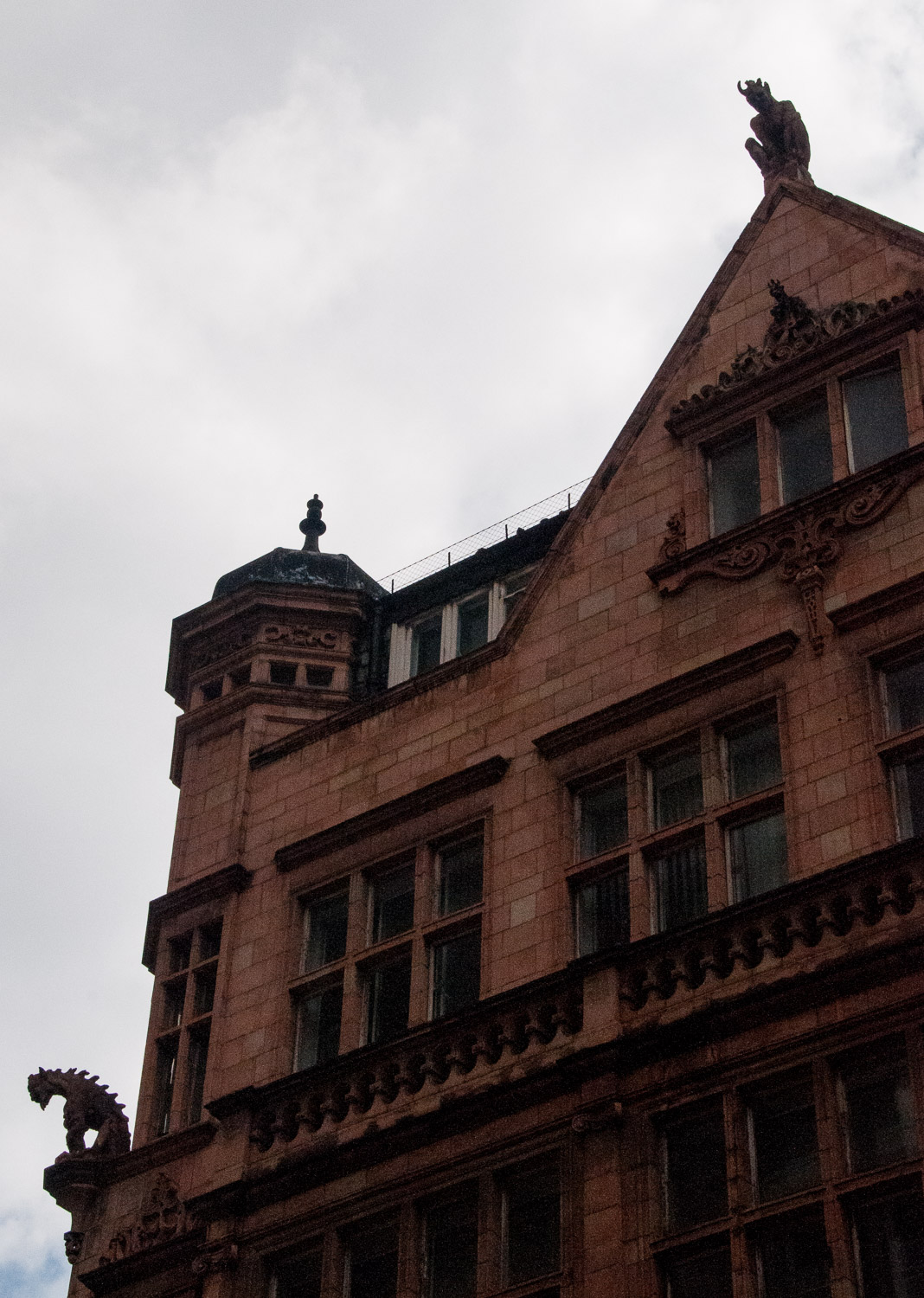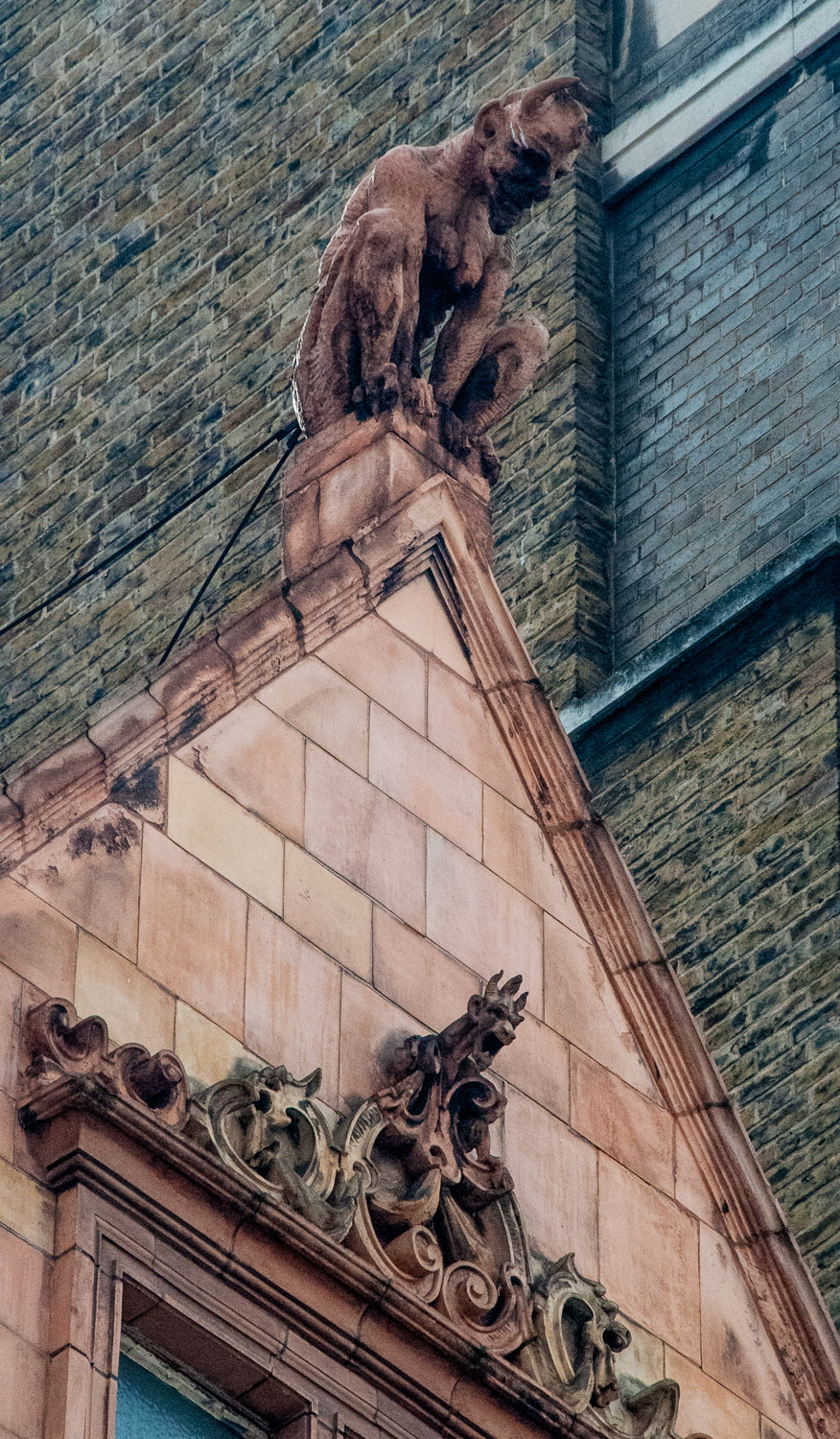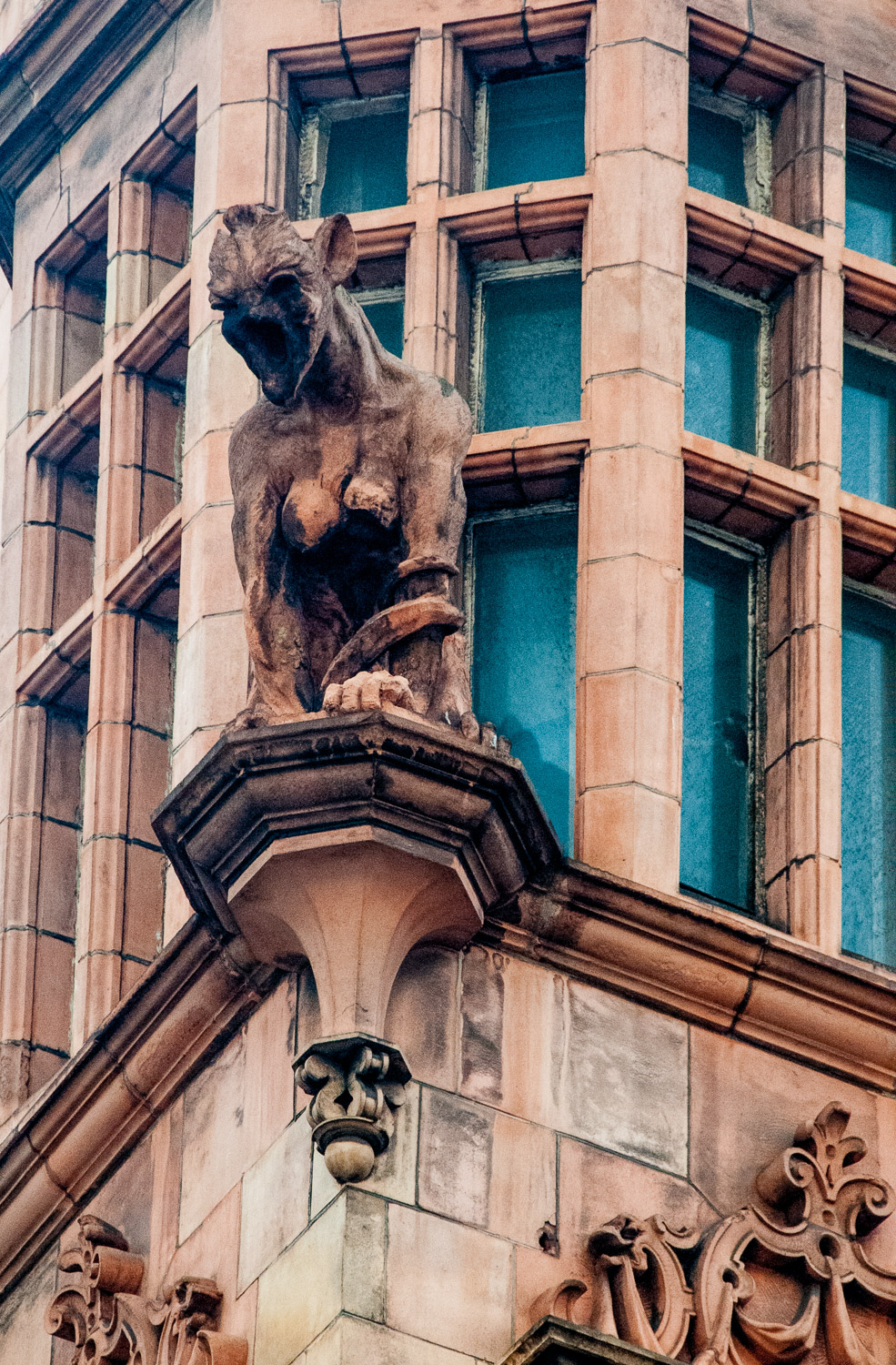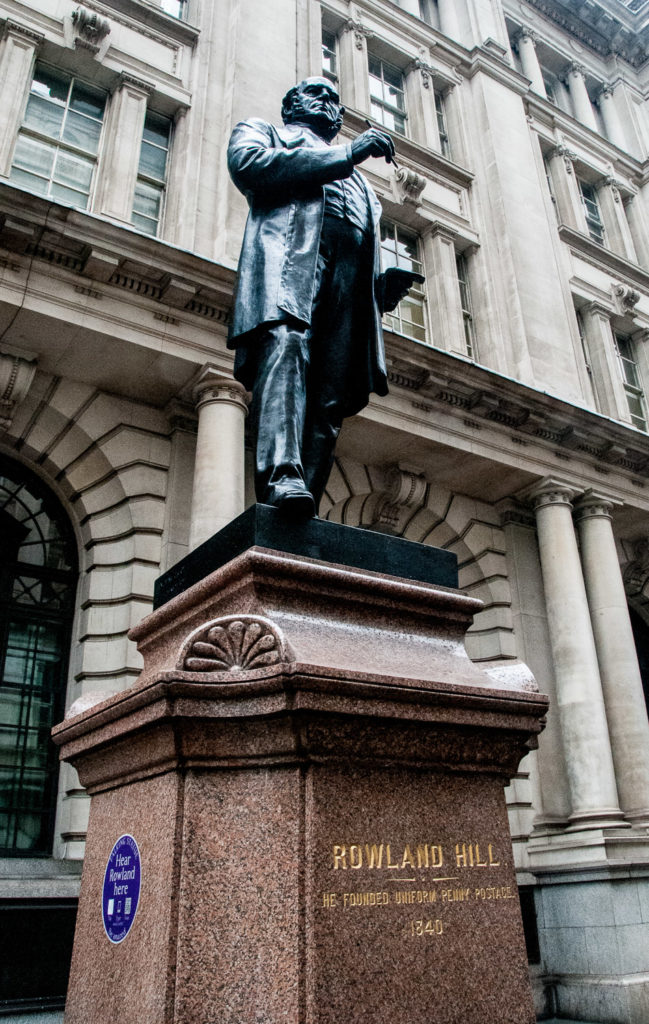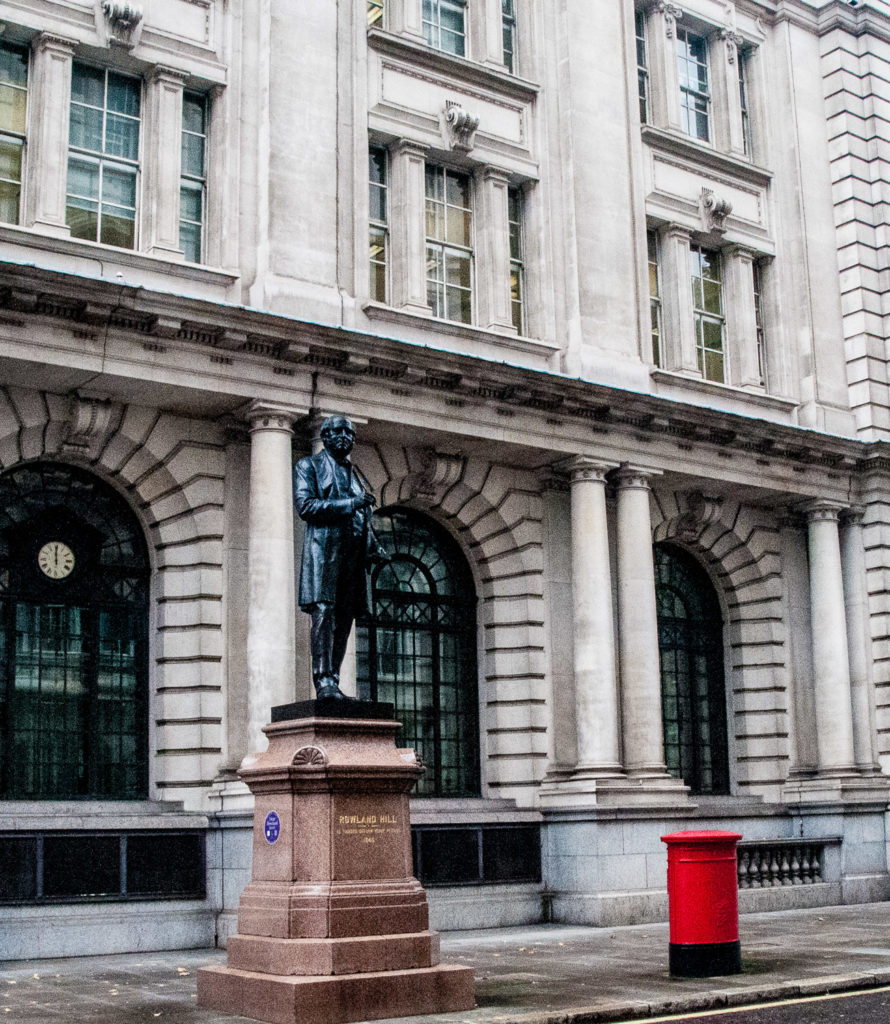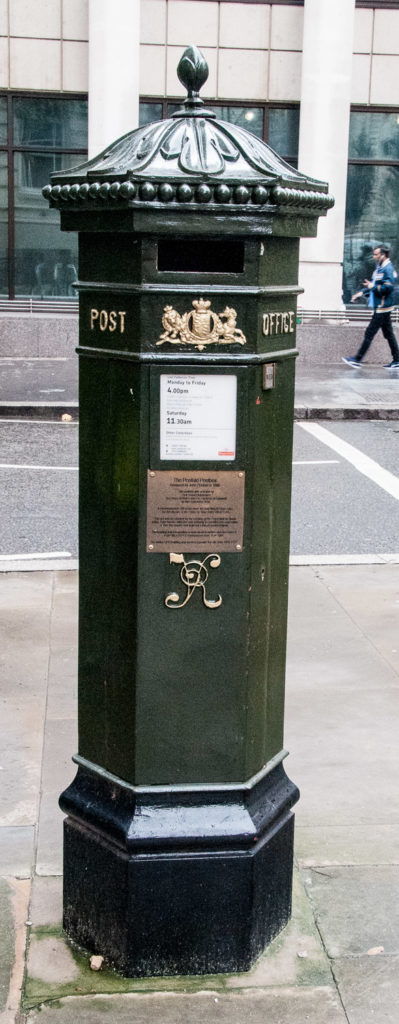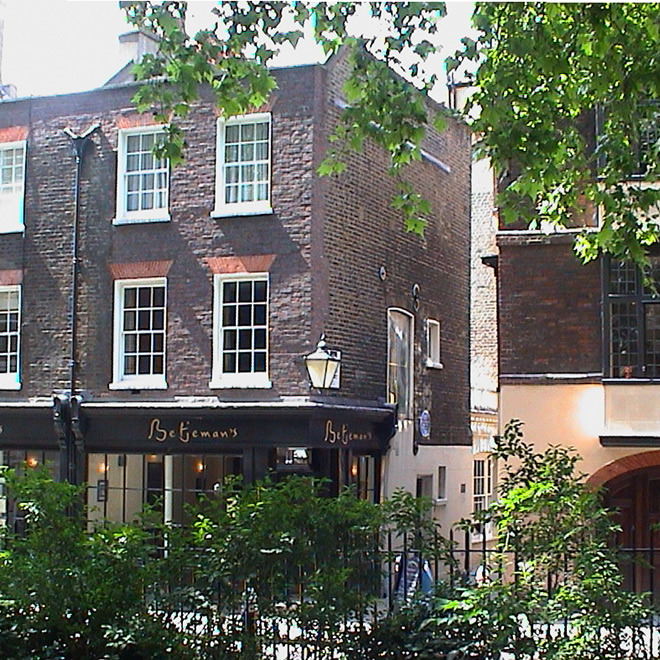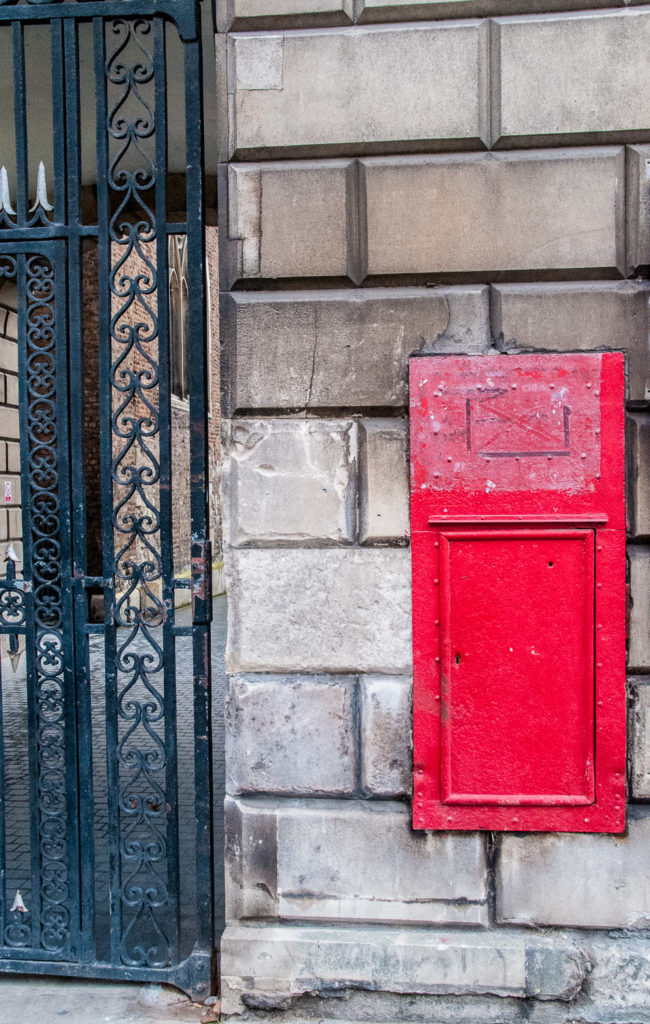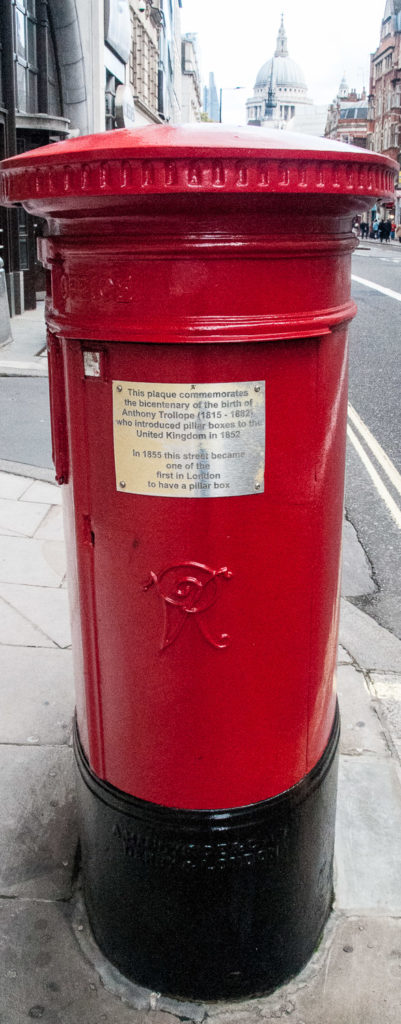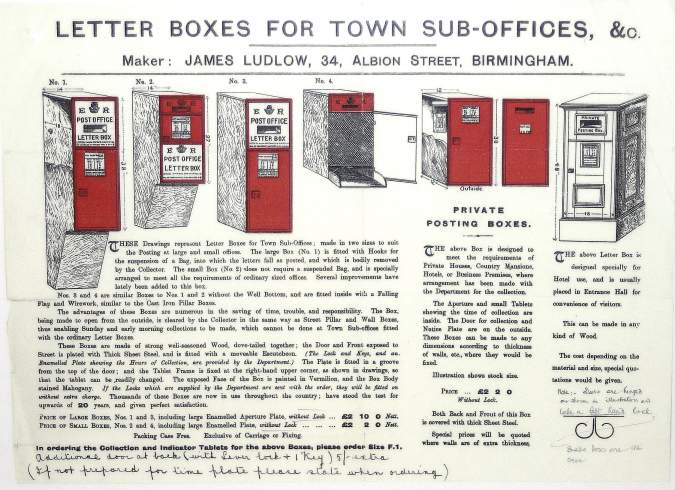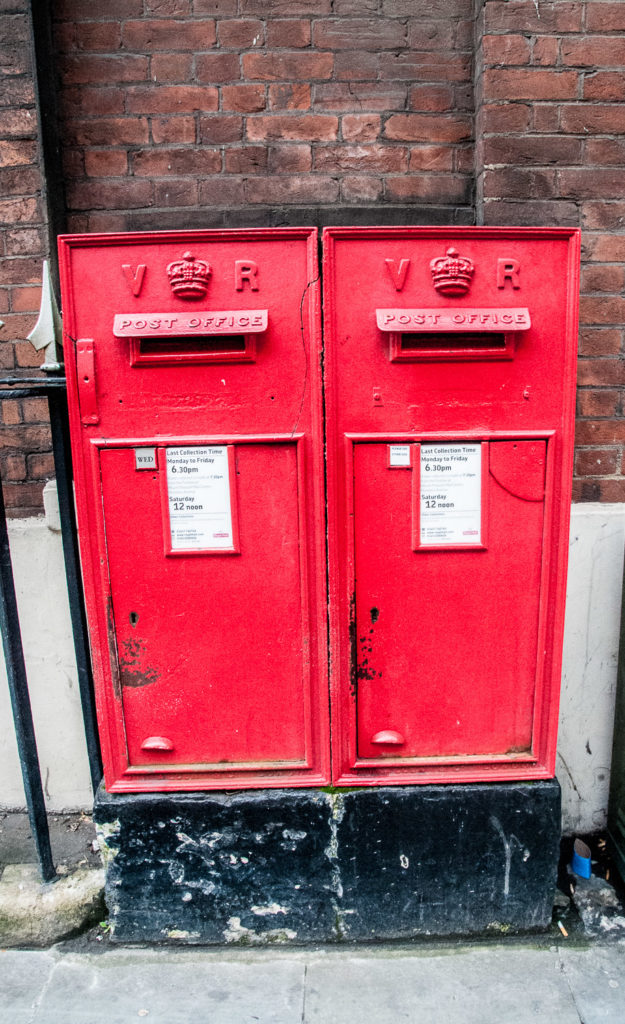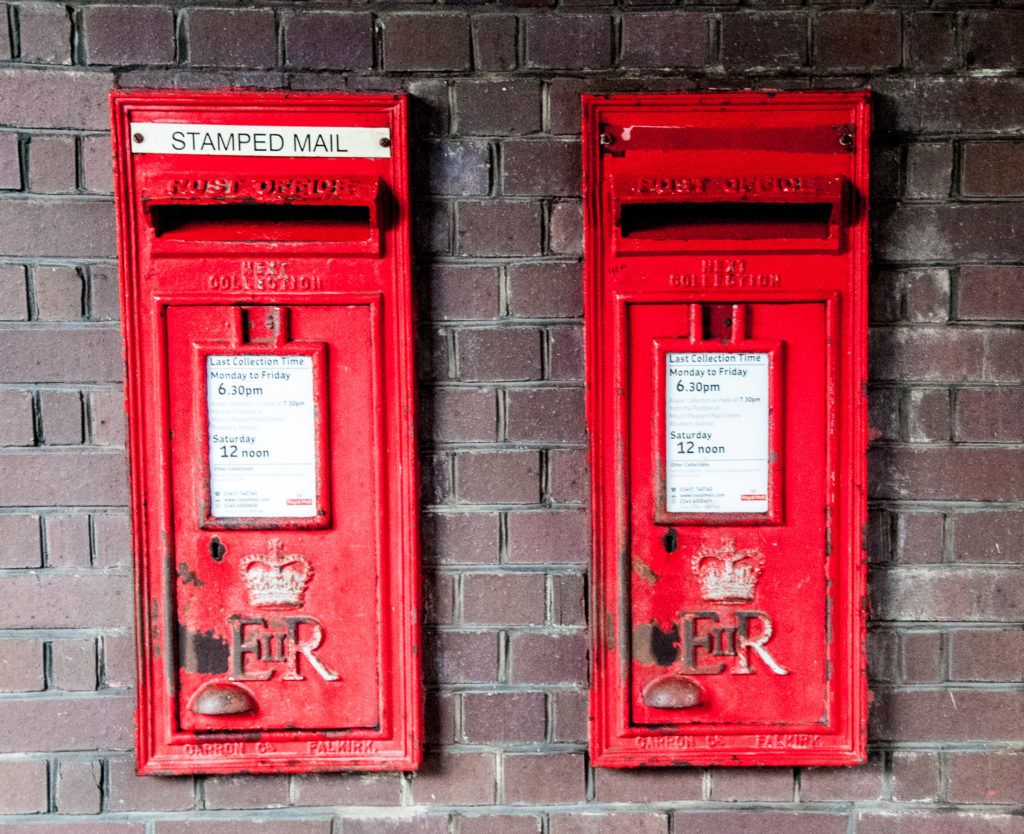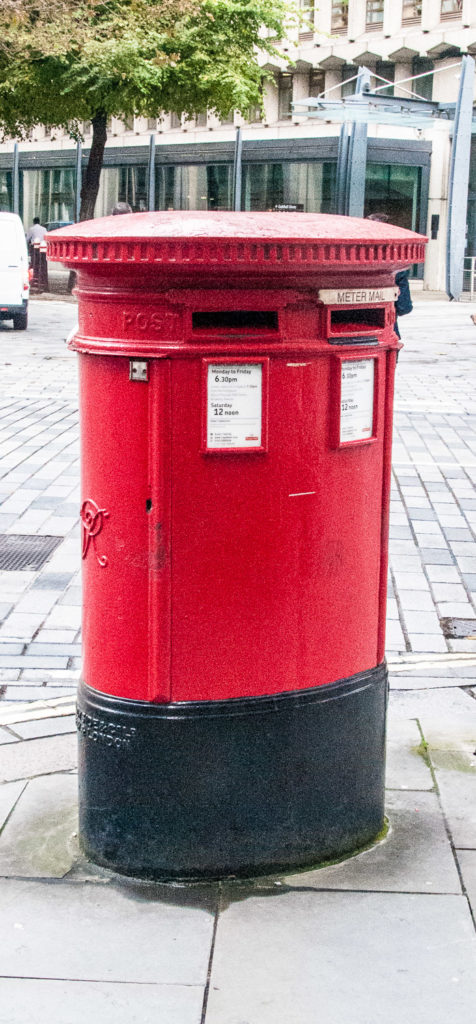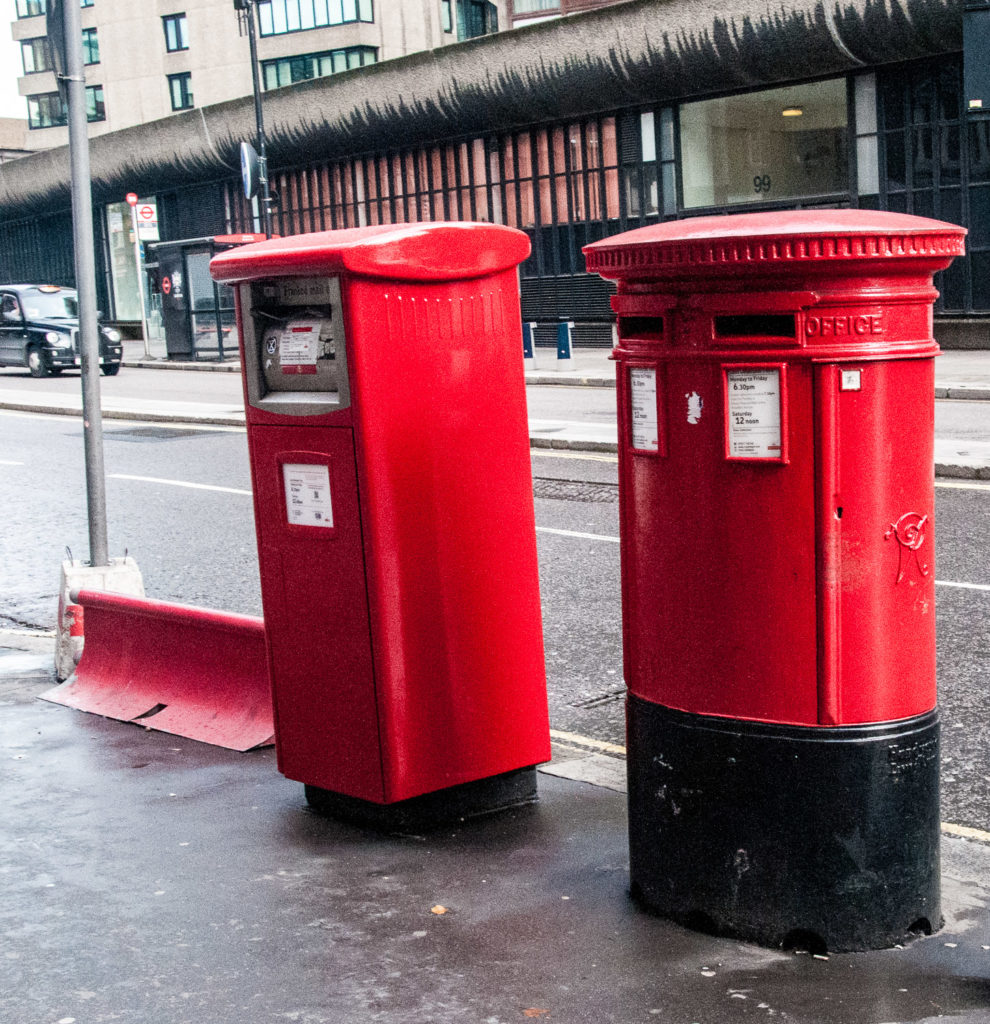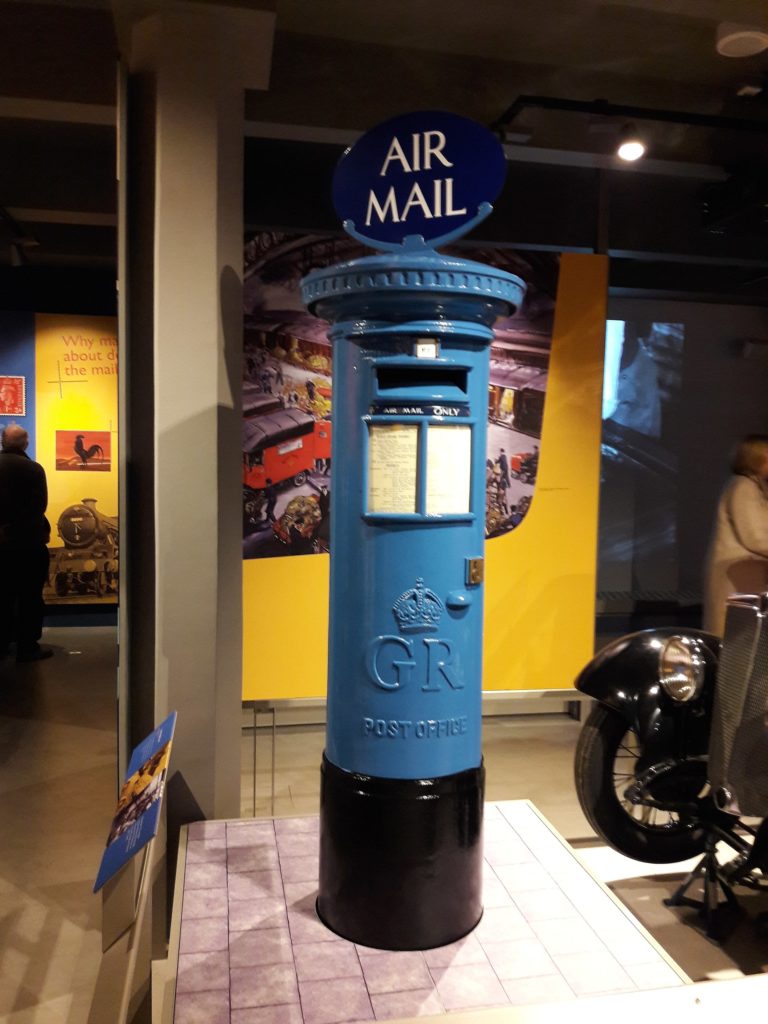If you walk east down Fleet Street past the Royal Courts of Justice and look up a fearsome dragon straight out of a Harry Potter story looms over you …
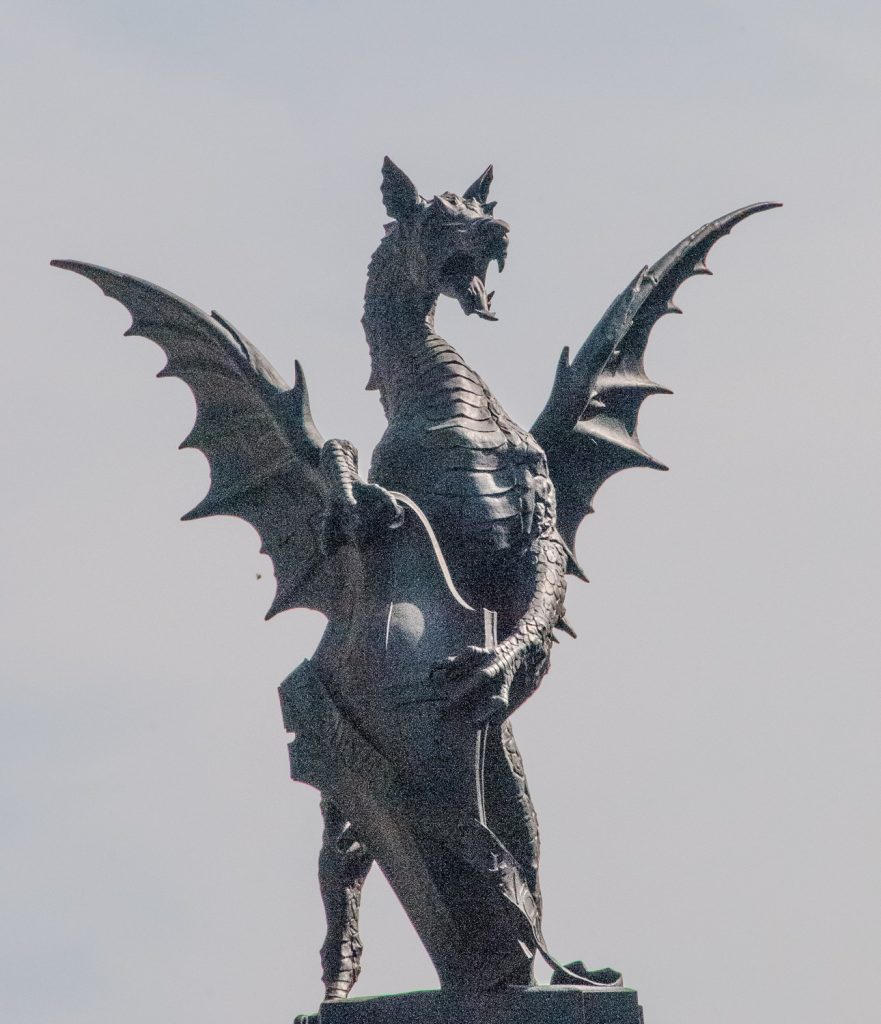
It sits atop the 1880 memorial to the Temple Bar that once stood here and marked the western boundary of the City of London. The beast holds in its forepaws a shield showing the cross of St George, part of the City’s coat of arms.
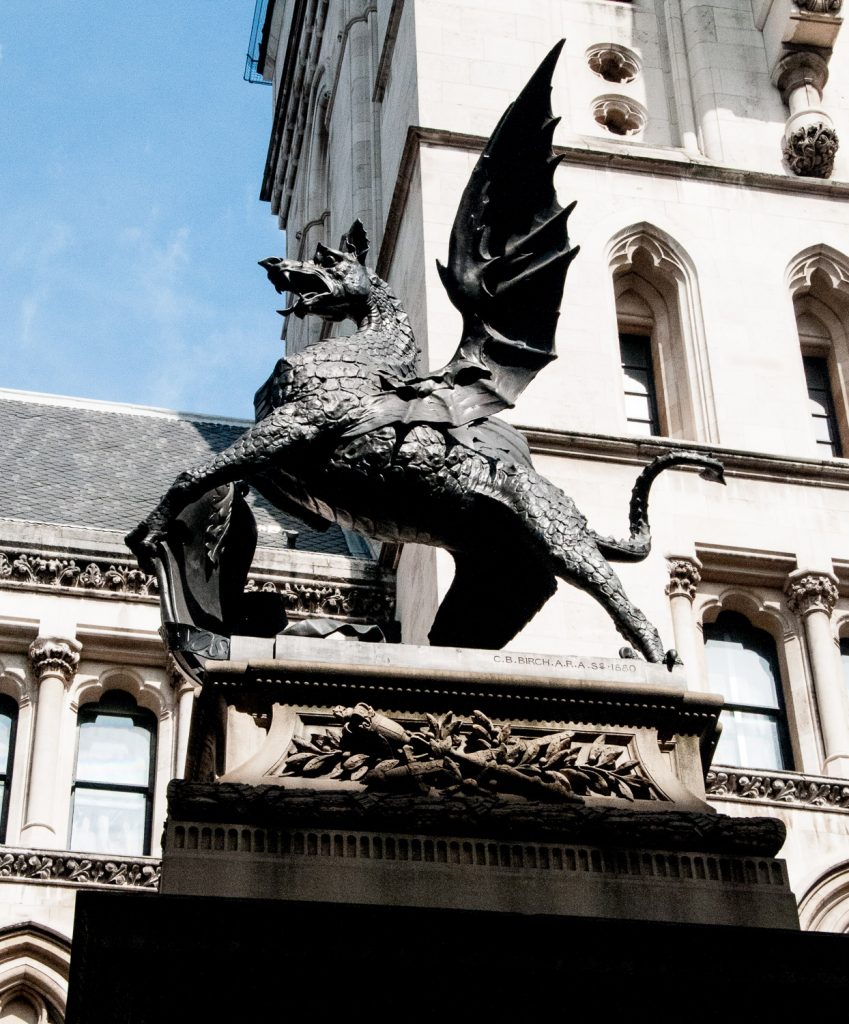
Unfortunately it is somewhat marooned on an island, and heavy traffic whooshes past, but it really is worth studying since it contains some fascinating detail. Let’s start with the people …
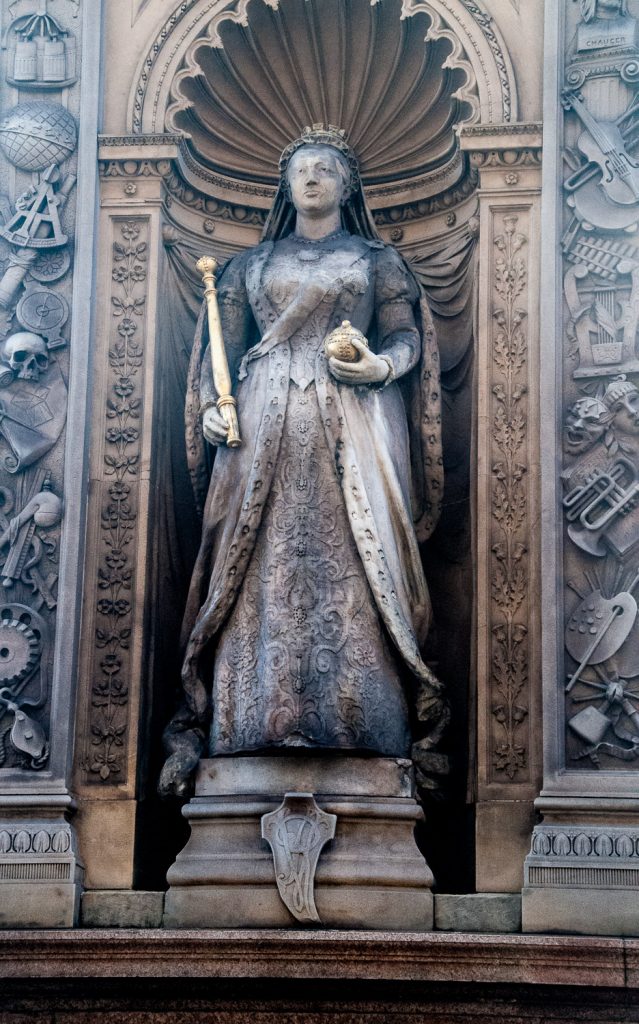
On the south side stands Queen Victoria in state robes holding a golden sceptre and orb. She is surrounded by symbols of the arts and science. Sadly the marble is very damaged by traffic fumes and pollution but some re-gilding was carried out to celebrate our own Queen’s Silver Jubilee in 2002.
On the north side stands Edward, then Prince of Wales but later to become King Edward VII on Queen Victoria’s death in 1901. He is wearing a Field marshal’s uniform …
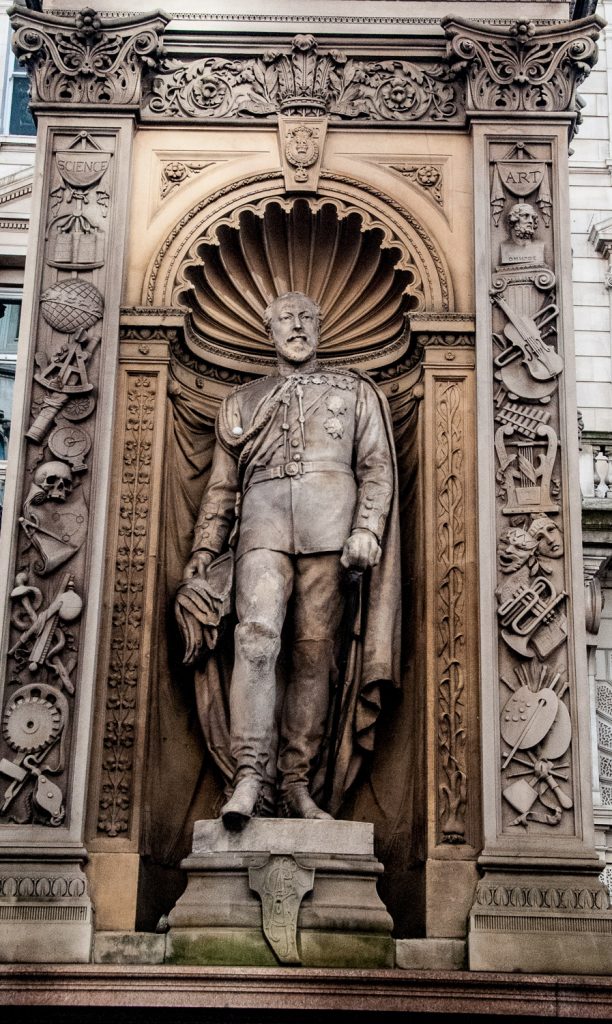
He has not been as badly damaged by pollution as his mum but it looks like he has been given a new left hand.
The west face is framed with pilasters each side, decorated with emblems of war to the left and peace to the right. Carved in the stone between the pilasters is a medallion portrait of Prince Albert Victor …
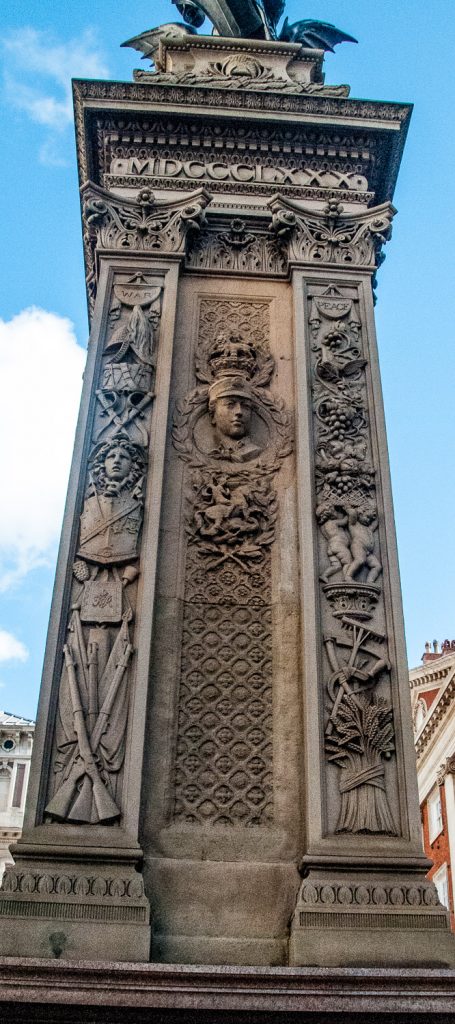
He is ‘the king we never had’ since he was the eldest child of the Price and Princess of Wales who died in the 1892 influenza epidemic. Look just below his head and you will see St George slaying the dragon.
Gazing down at us on the east side is the generously bearded face of the Lord Mayor at the time of the monument’s erection, Sir Francis Wyatt Truscott …
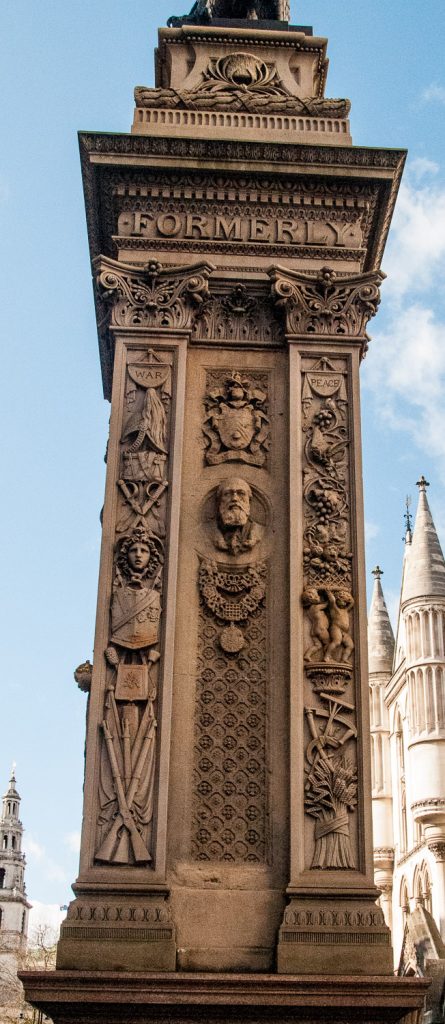
Above his head is his coat of arms and below his ornate chain of office.
The art historian Philip Ward-Jackson writes …
The reliefs of royal progresses and the portraits of Queen Victoria and the Prince of Wales celebrate the congenial relations between the City and the royal family, and recall the ceremonial function of Temple Bar as the spot where the Lord Mayor traditionally met royal visitors to the City.
The reliefs are absolutely fascinating and I do recommend you brave the traffic in order to get a closer look. This is the one on the north side …
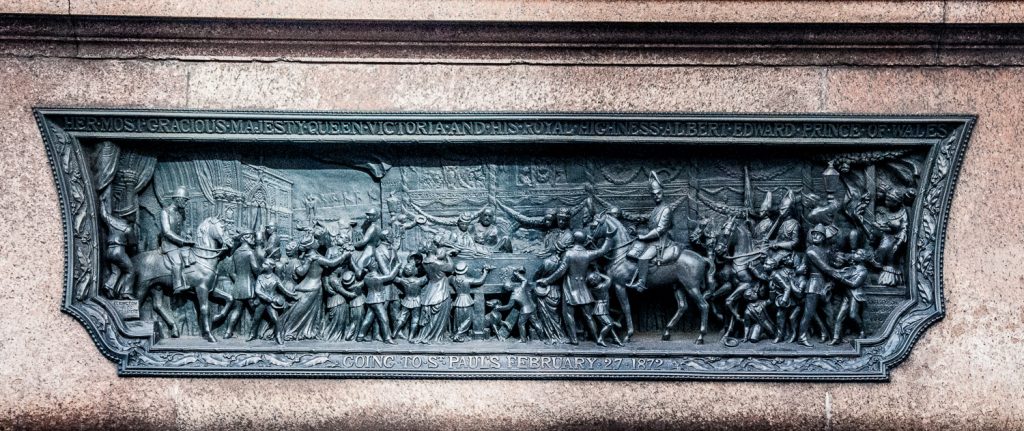
It depicts Queen Victoria and the Prince of Wales on their way to St Paul’s Cathedral for an 1872 service of thanks to celebrate the Prince’s recovery from typhoid.
This is the one on the south side …
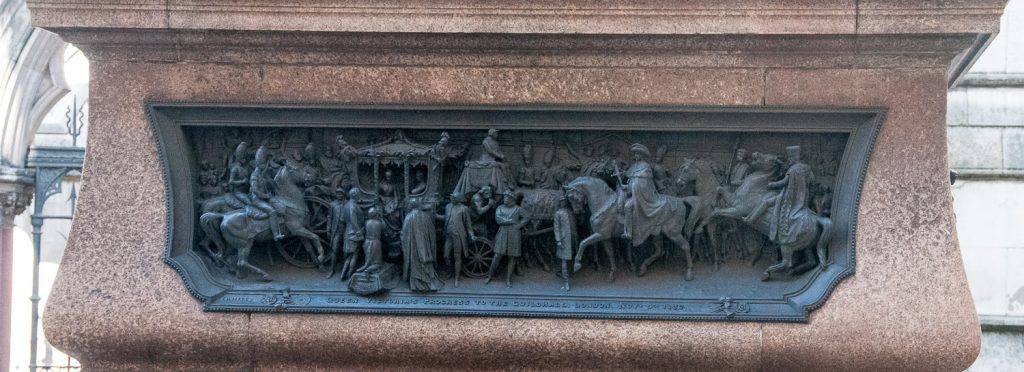
Here Victoria is progressing to the Guildhall on 9th November 1837 after her accession. This is a close-up courtesy of the Ian Visits blog …
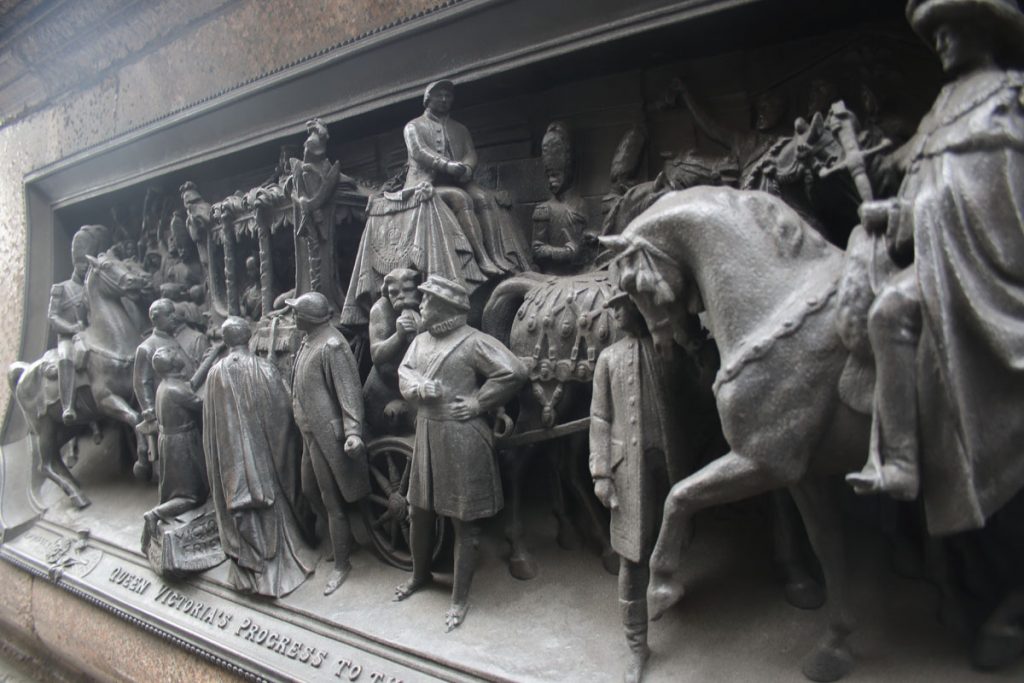
On the east side a plaque commemorating the removal of the old Bar – a curtain is being dramatically drawn over it by the angels of Fortune and Time …
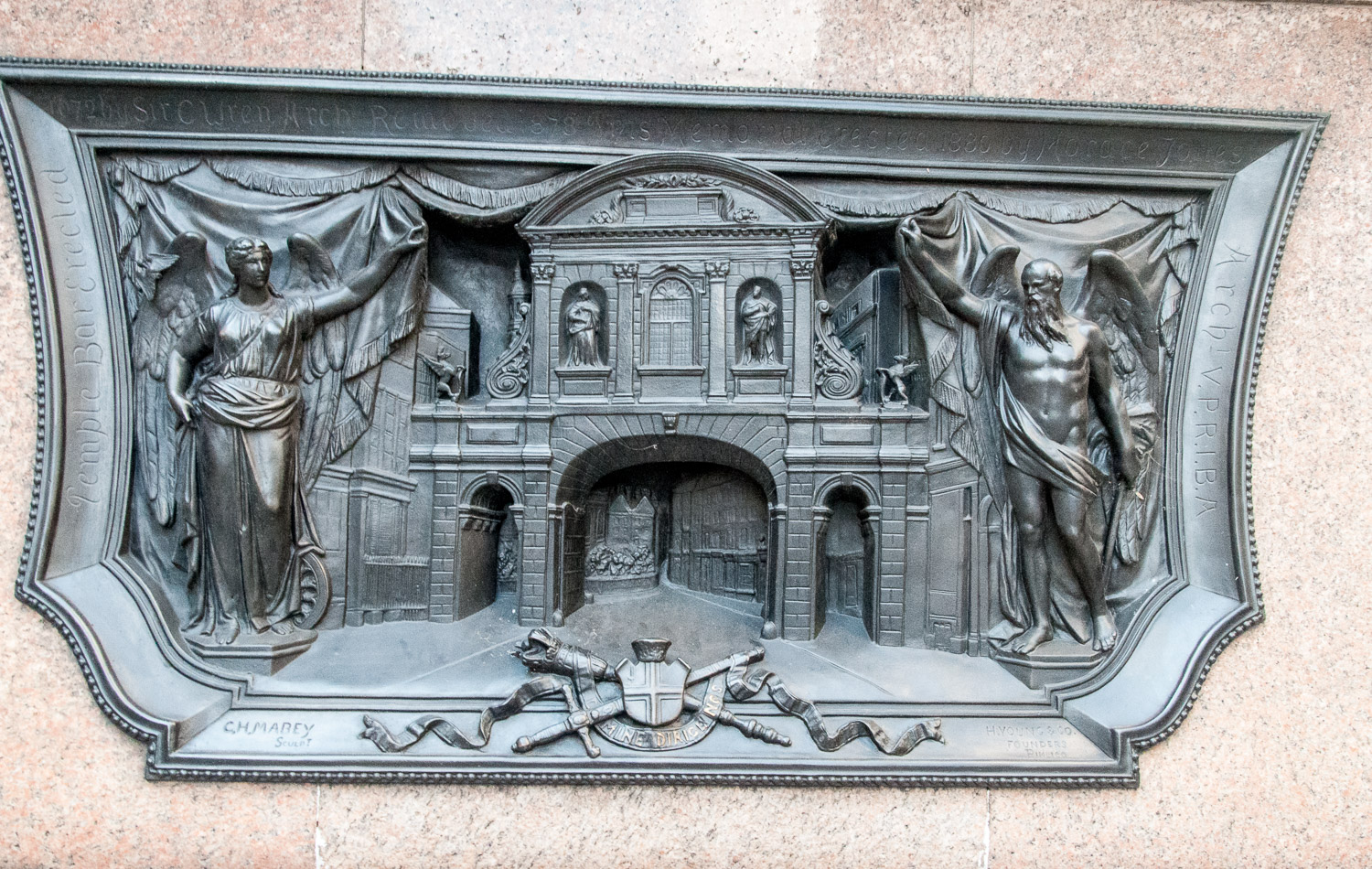
And finally, on the west side …
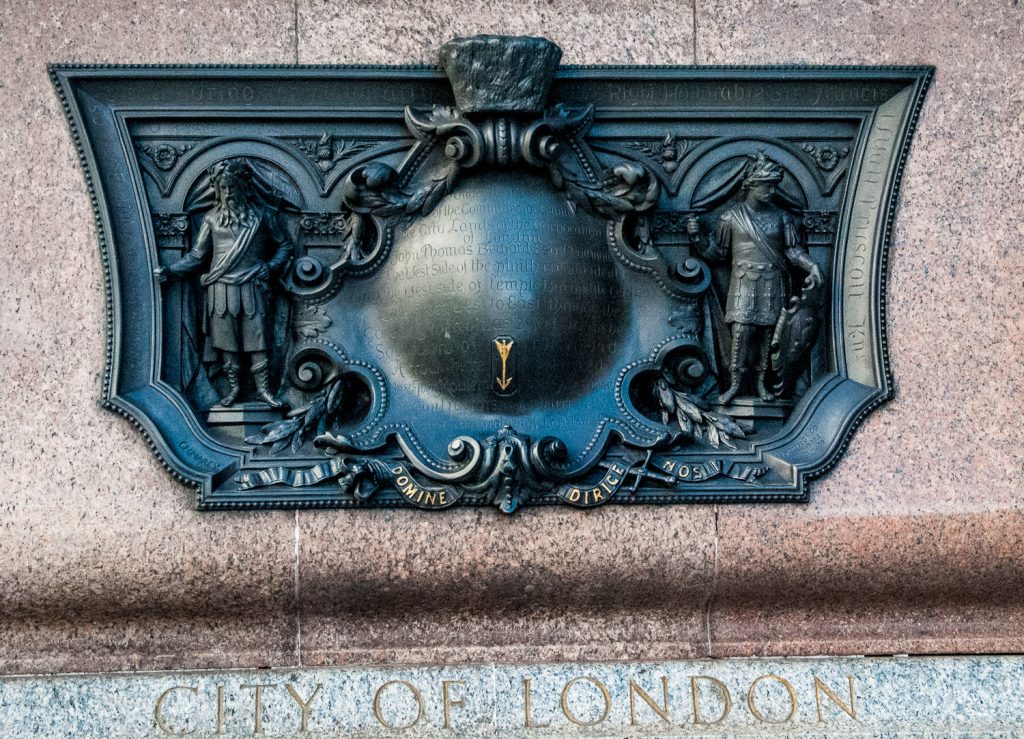
Flanked by the giants Gog and Magog, a golden arrow indicates the position of the west side of the old Temple Bar and where a line drawn through its centre from east to west would emerge.
The old gate, one of the eight that originally gave entry to the City, was removed in 1878 because it obstructed the traffic but has now found a new home alongside St Paul’s Cathedral …
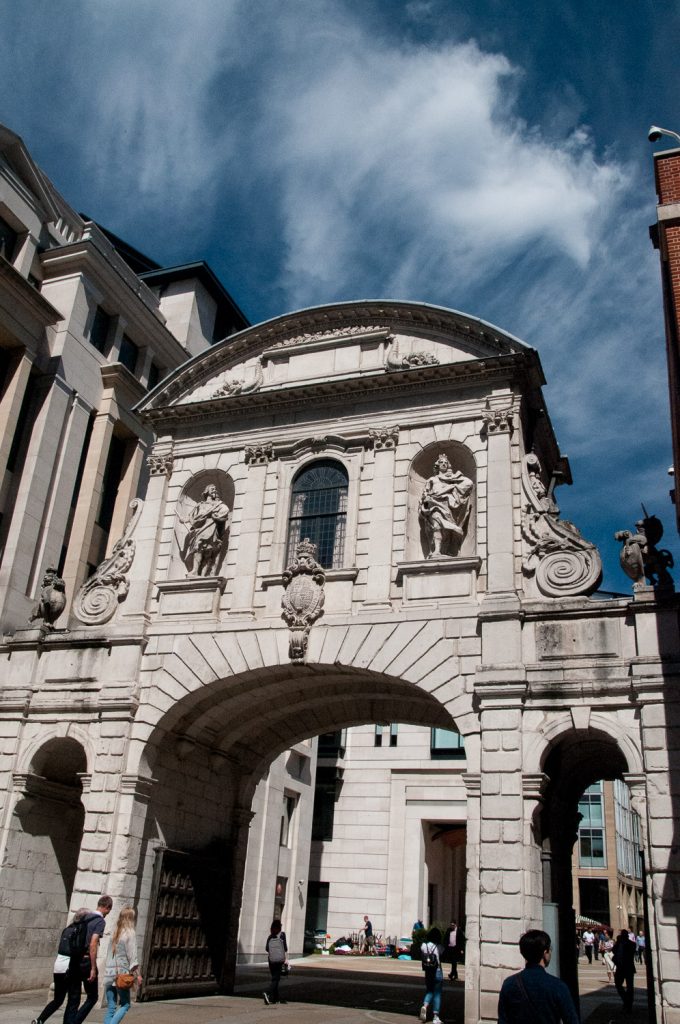
Read more about its fascinating history since it was dismantled in my blog Temple Bar and the Banjo-playing Lady.
Remember you can follow me on Instagram :

